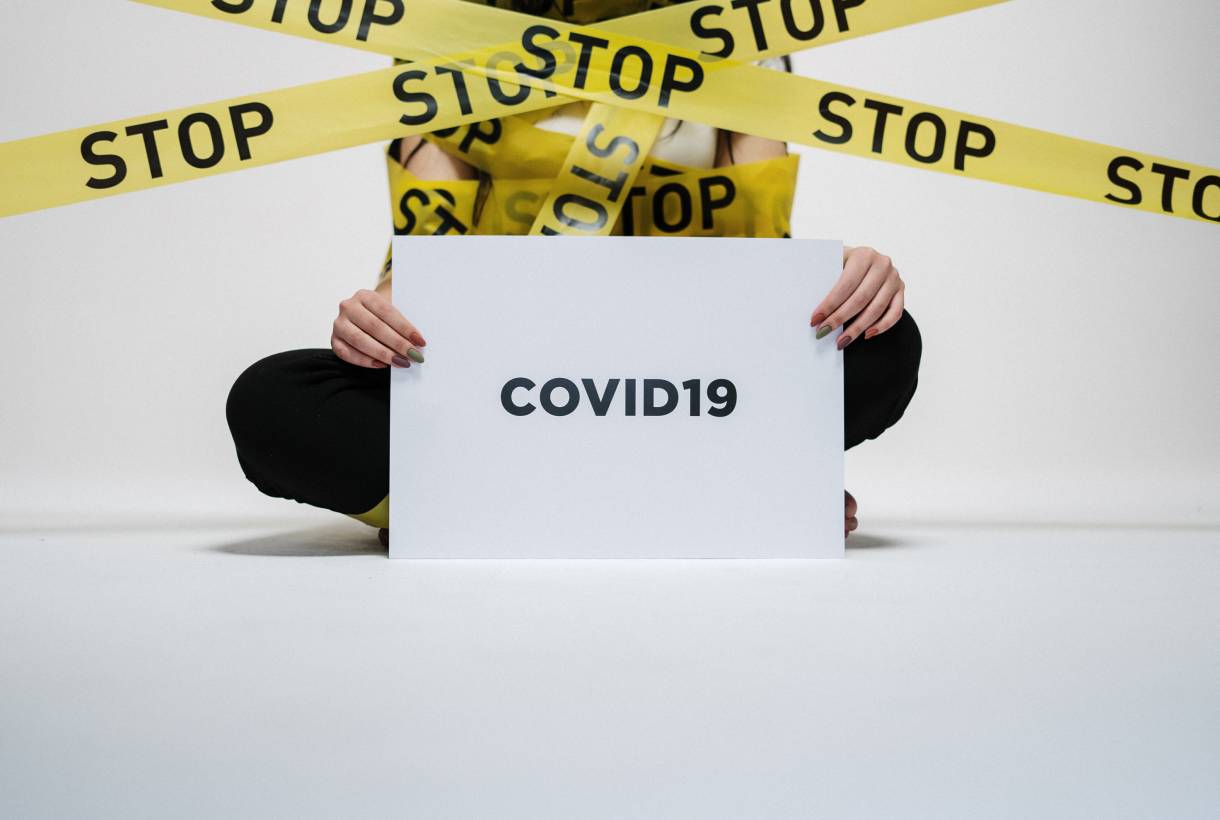
Together we are stronger – and this is more necessary than ever in unstable times that shake the foundations of the current economy. The textile industry (national and international) could not be left out of the emergency caused by the coronavirus, and it is admirable how in recent weeks it has joined efforts to manufacture on a large scale basic medical supplies to help cut the chain of contagion of the disease, and thus slow down the pandemic.
In extraordinary situations shock measures are needed. In our country, Spanish textile companies, as well as cosmetics, automotive and beverage sectors, have heard the government’s call to convert production to make masks, gloves, assisted breathing equipment or disinfectant gels to the maximum speed. This reconversion serves to supply hospitals, residences and essential service workers who urgently need this material to face the battle against the epidemic. Until now lack of resources was one of the black holes that gave wings to the coronavirus.

In the case of the textile industry, the companies that are joining the initiative have gone from sewing pants or dresses to making surgical masks and “use and throw” gowns that are used by thousands in hospitals. To date the sector has the necessary machinery, patterns and fabrics ready and once they comply with all the requirements and approvals approved by the Textile Technological Institute (AITEX), mass production will begin. Estimates are indeed encouraging: they calculate that up to 160,000 masks a day and about 50,000 disposable gowns can be manufactured.
The big international fashion brands have also gone to work with special productions accompanied by financial donations dedicated to providing current resources in hospital centres and promoting scientific research to accelerate the race to find the vaccine that eradicates the coronavirus. For their part, the Spanish fashion giants (Inditex, Mango, Tendam and Desigual) also have an army of suppliers around the globe to obtain more medical supplies. Things are already moving in this regard.
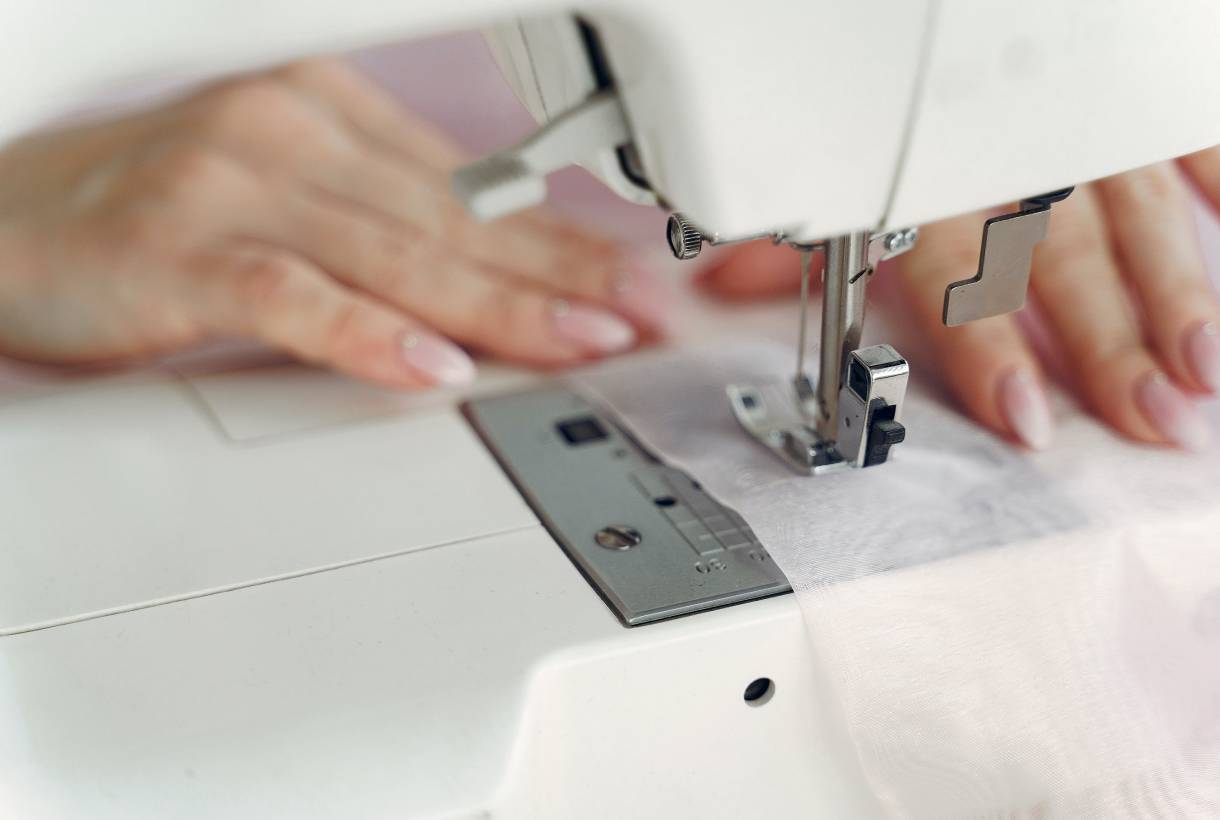
An army of volunteers fights for the cause
Beyond unity, if there is something that is happening in a positive key in almost every corner of the planet and that is teaching us a valuable lesson in humanity these days, it is solidarity. Everyone wants to join in and help as much as possible to slow down the pandemic. Apart from private initiatives, which are many and diverse, one of the projects related to fashion that has contributed its grain of sand has been Modistas Solidarias, an initiative promoted by the designer María Cordero, alter ego of the Spanish firm Wolflamb. Its goal has been to convert all the cotton fabrics into masks to supply the hospitals near its workshop in Valencia, and for this reason all seamstresses on the team are involved. This small project has gained in strength by the addition of small workshops and individuals spread throughout Spain. Along with anonymous volunteers, well-known names such as Ariadne Artiles, Eugenia Silva, Blanca Padilla, Paz Vega and designers Vicky Martín Berrocal and Juan Avellaneda have also joined the initiative.
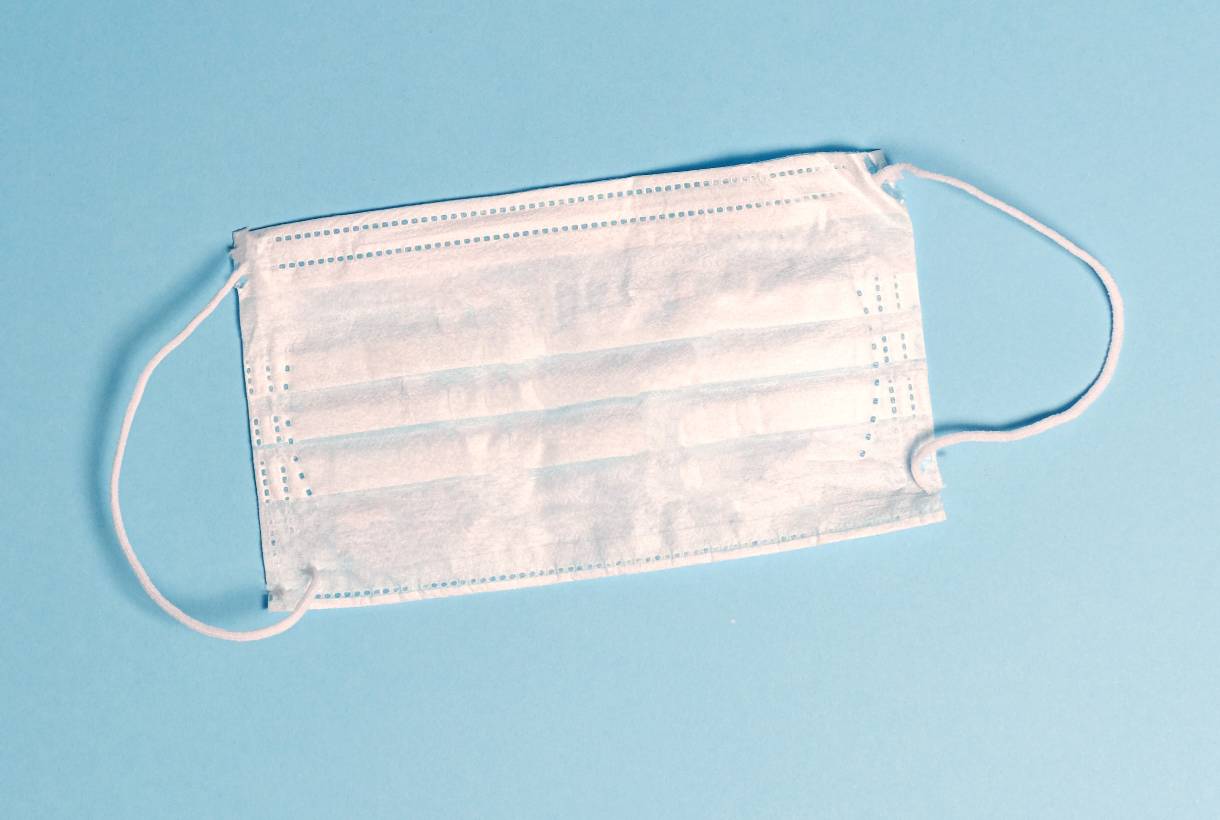
Gratacós is also committed
At Gratacós we have not stood idly by and we are aware of our social responsibility as a fabric company. We too wanted to join forces in the fight against the coronavirus. So far we have supplied and shipped dozens of cotton fabrics to local workshops and neighbourhood companies for mask manufacturing. We are aware of the state of emergency and in the coming days we shall be studying how to encourage more actions to alleviate this social, economic and health crisis. We will inform you through social networks. Look after yourselves at home!
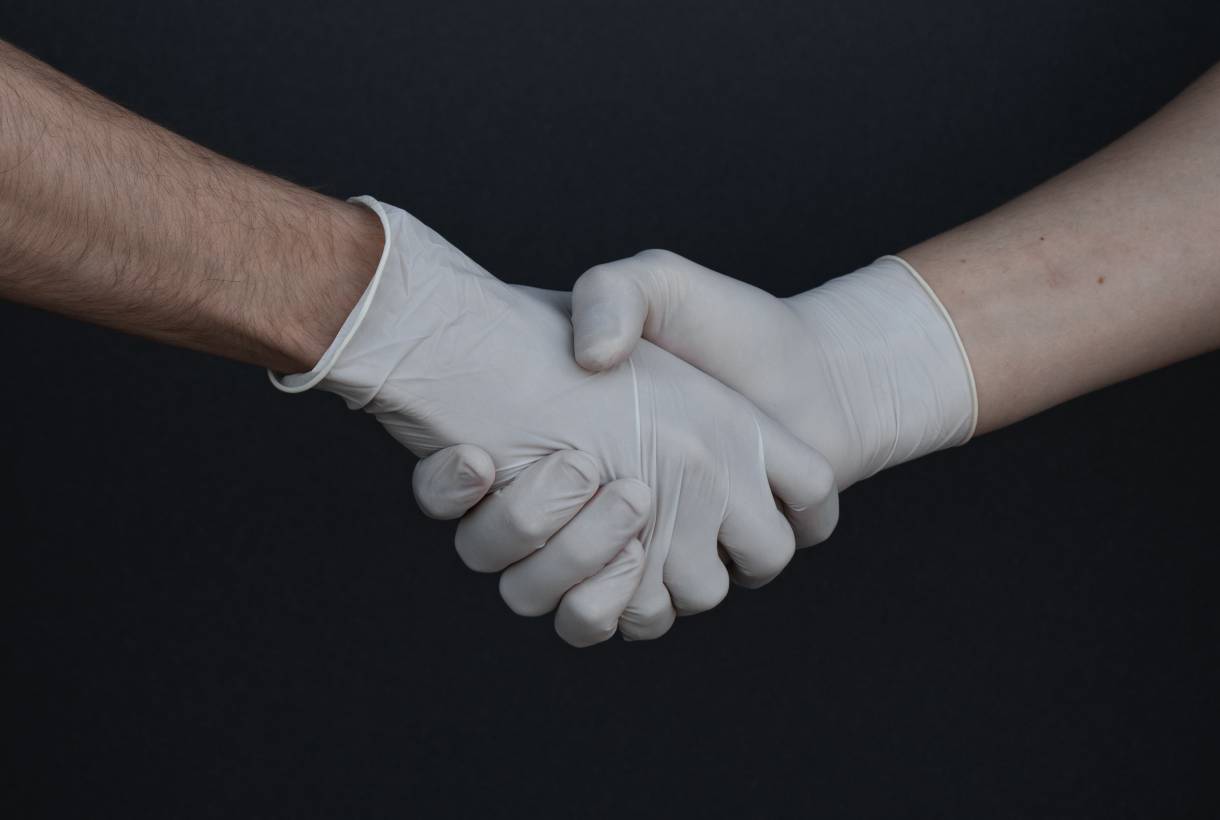
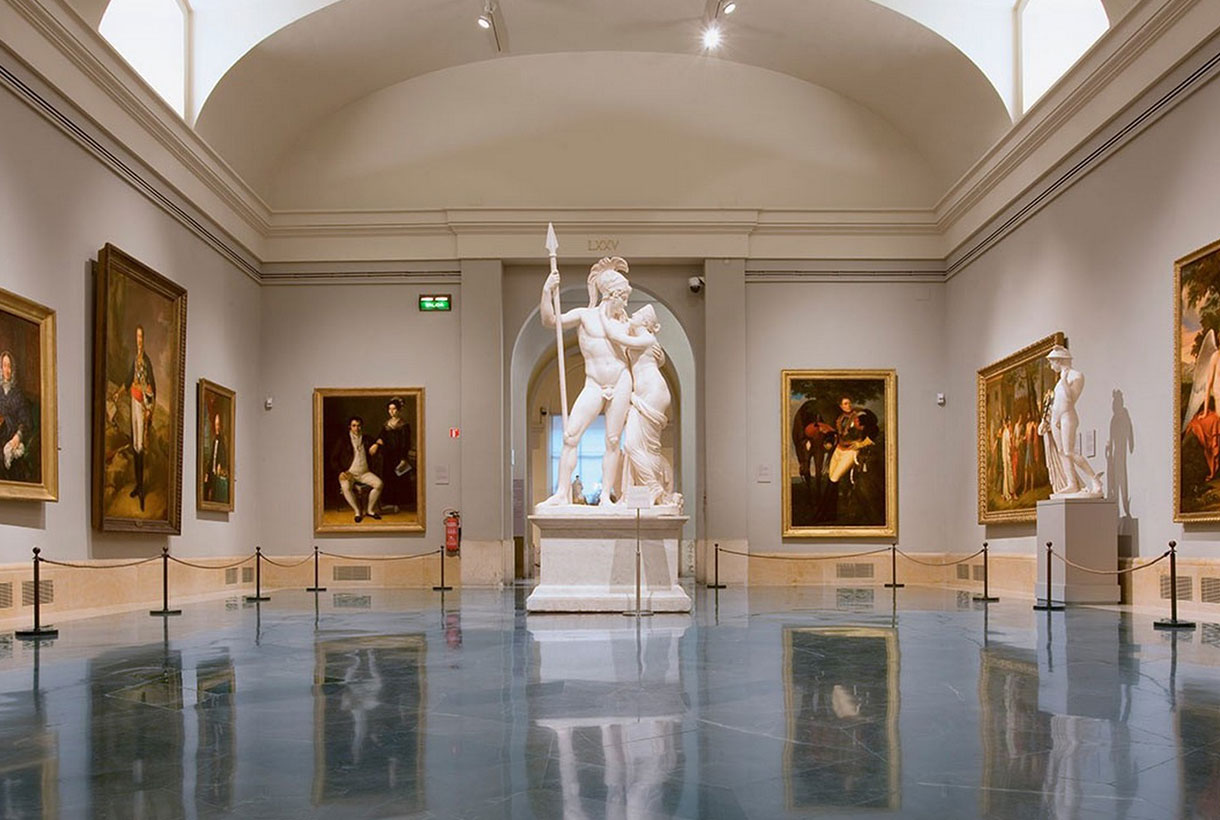
No one denies the obvious. Culture and leisure in its most traditional exhibition formats have been one of the biggest victims of the coronavirus. The closing of movie and concert halls, museums, exhibitions, theatres and libraries, among others, and the subsequent confinement in the home have hampered consumption habits via physical methods. Even so, culture is subversive and in difficult times it has always found alternative ways to spread knowledge through other media. And, in this case, despite the confinement, cultural life continues behind the screen in fully digital terrain.
The virus has not stopped the immense power of culture with its multiple channels of expression that allow it to keep its objectives intact: to spread knowledge, contemplate beauty, stimulate the imagination and create critical opinion. In fact, in the last week confinement has put to the test the ingenuity and creativity of many artists who have devised new proposals to experience culture from the sofa at home. From sporadic festivals to virtual visits, streaming talks or improvised courses. Every day new and original small-format initiatives emerge, in addition to those promoted by the world’s main art centres, to expand the list of cultural activities offered as an alternative to entertain and animate the days when people are shut-in at home.
Here we suggest some ideas for continuing to feed the intellect from home.
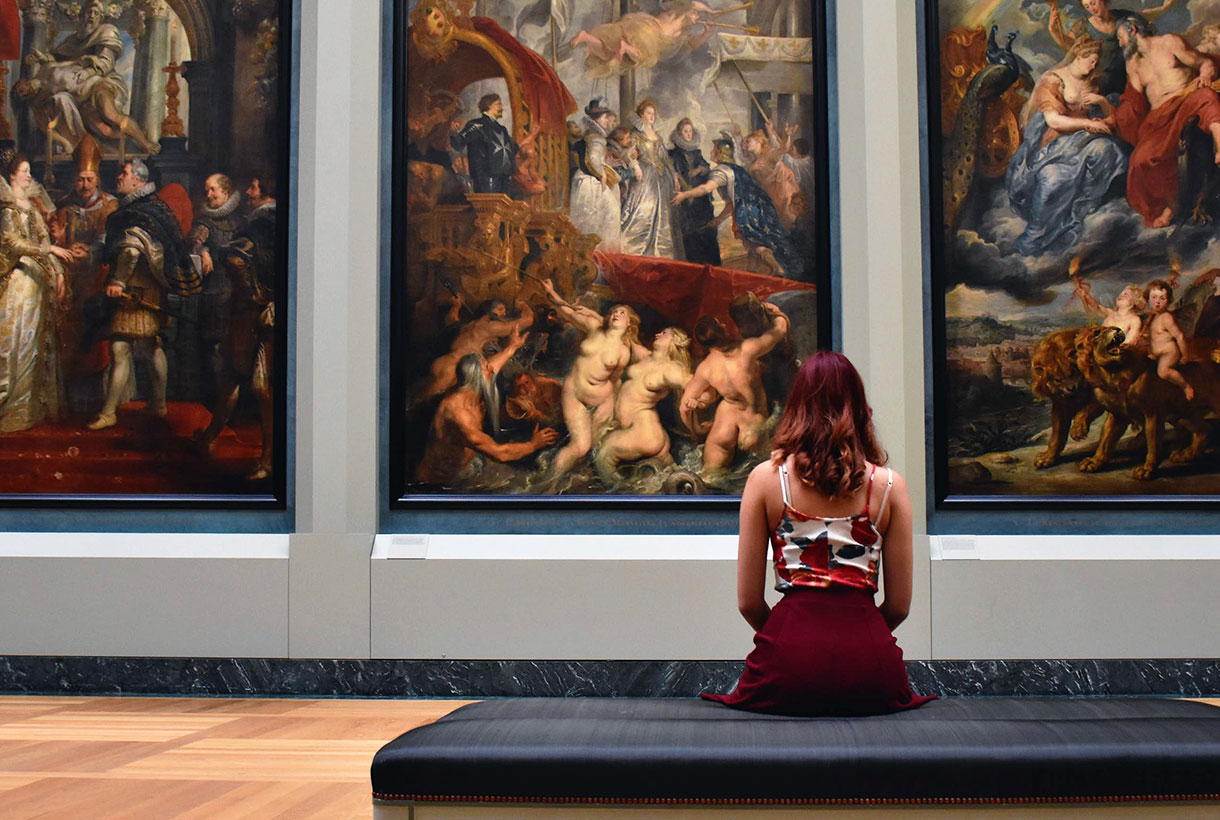
Virtual art
Museums and cultural centres around the world are still open virtually. This is the example of the Thyssen, the Prado, the Reina Sofía or the Museu Nacional d’Art de Catalunya, which offer virtual tours, videos, audios, conferences and even online courses to enjoy the cultural activities of these Spanish cultural venues. Internationally the Uffizi in Florence, the Vatican Muses, the Louvre, the Metropolitan in New York and the National Gallery in Washington stand out, for example, which also show visitors their online collection. For its part, Google,via its app, Arts and Culture, offers virtual reality guided tours of museums, masterpieces and even the construction of the statue of Liberty in New York. In fact, the almighty Google collects more than 7,000 virtual exhibitions from all over the planet. The difficult thing in this case, is to choose the sample to look at. For its part the benchmark for contemporary art, the MOMA, is also offering 6 interesting courses related to fashion, art, photography and design, all for free and without leaving home.
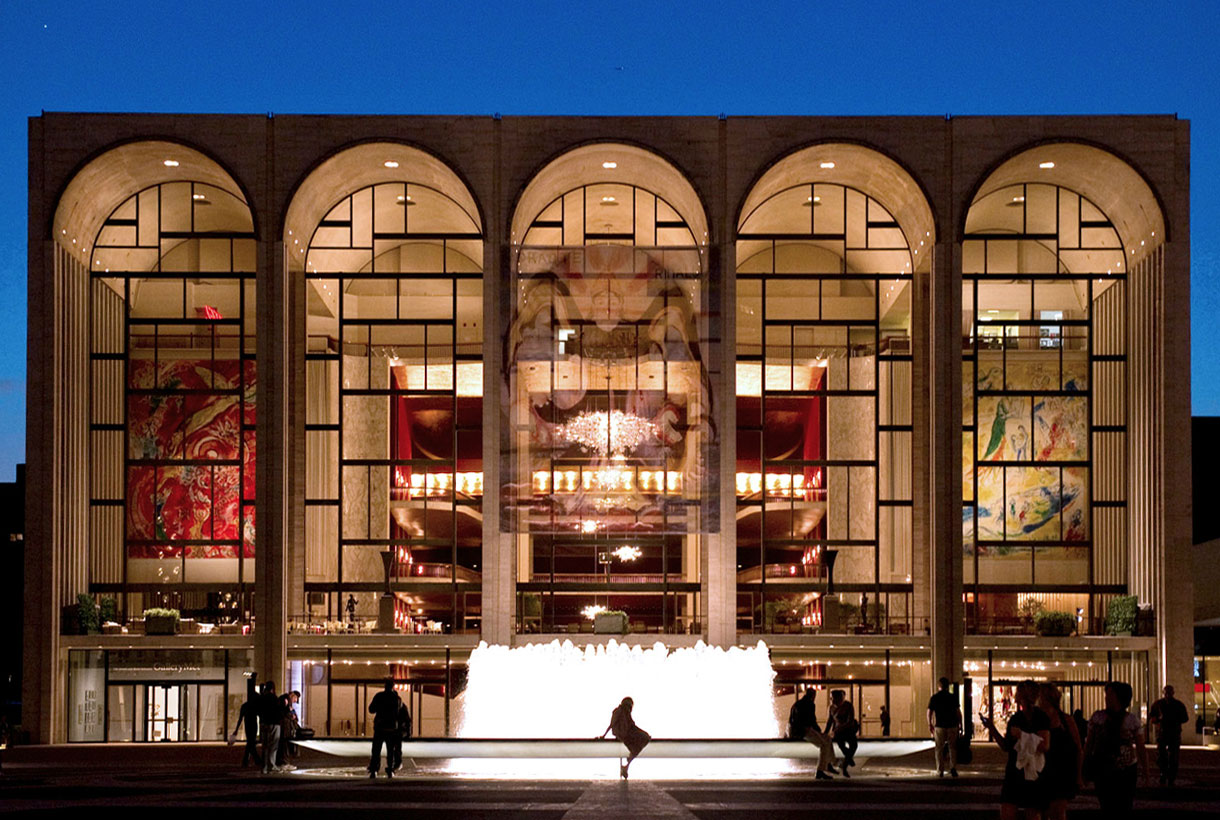
Theatre and performing arts
The performing arts also offer facilities to digital users. The Teatroteca of the Ministry of Culture is available with more than 1,500 plays, circuses and dance with works available to users such as ‘The house of Benarda Alba’, ‘Life is a dream’ or ‘Blood weddings’. Anyone can access them through a free online registration through Bibliotecacdt.mcu.es. For its part the New York Metropolitan Opera is offering great classics of the genre in streaming such as ‘Carmen’, ‘La Boheme’, ‘La Traviata or‘ Il Trovatore ’.

Series and films
Digital payment platforms for viewing audiovisual content have experienced a new boom in subscriptions that show the increasing consumption of series, documentaries and films among confined users. Apart from the kings of streaming, there are also other public websites such as RTVE or Televisió de Catalunya that offer series and movies for free and legally. Other pages such as Efilm.online and Ebiblio.es have a catalogue of free movies, books and magazines for those who have a library card. Libraries, such as Nacional or Catalunya, and websites such as Google Books also offer free reading.
Live music
Music knows no borders. And less in difficult times, where it shows the great ability to break barriers and reach all corners and audiences. Initiatives of all kinds have emerged from social isolation: from sporadic concerts through Instagram grouped in hashtags that are running like wildfire on the Internet such as #YoMeQuedoenCasa to alternative music festivals such as the Quarantine Fest to make the state of confinement more bearable. This latest initiative brings together 50 bands that offer private concerts from their homes through YouTube. Some anonymous artists have even come out onto their balconies to perform songs a cappella, or with their musical instruments, to offer impromptu live concerts to their neighbours.
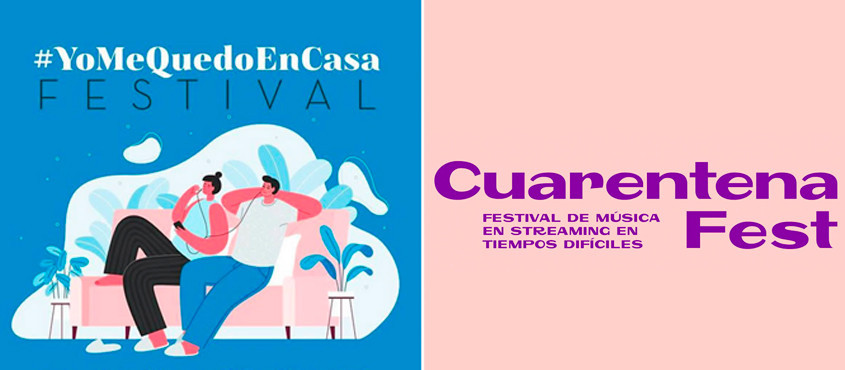
In the coming days, the cultural offer will increase to maintain a certain normality from home. Evidently the consumption format changes because coronavirus has reduced the aesthetic experience to the window of a screen. Also missed is that essential social component that sustains culture: to climb on a stage, to comment on some works that excite,to walk through an exhibition… but we are sure that when this situation is over we will perceive (and appreciate) beauty in another way and from all possible areas. One last tip: keep your wifi well-connected!

“Green green top the team. Green wind. Green branches … ” intones the enigmatic ‘ Romance Sonámbulo ‘ by Federico García Lorca , perhaps one of the most admired written works of the Spanish poet. A poem where green, which is used in a metaphorical key, is the protagonist of his verses and which serves as a prologue to introduce our particular tribute to this colour full of dualities.
Beyond the colour associated with hope, nature or the environment , did you know that green is the colour of fertility and the bourgeoisie? The tone that is linked with the sacred and the poisonous . The eternal intermediate , which calms and stimulates, and is secondary by definition because it is halfway between blue and yellow in the visible spectrum. Green is life, youth and freshness, but it can also be the tone of the unreal, of envy and disease. How contradictory, right?
We review some curiosities of green that, according to Eva Heller in her book ‘Psychology of colour’, is the preferred colour of 16% of men and 15% of women. A preference that increases with age, especially among the male population.
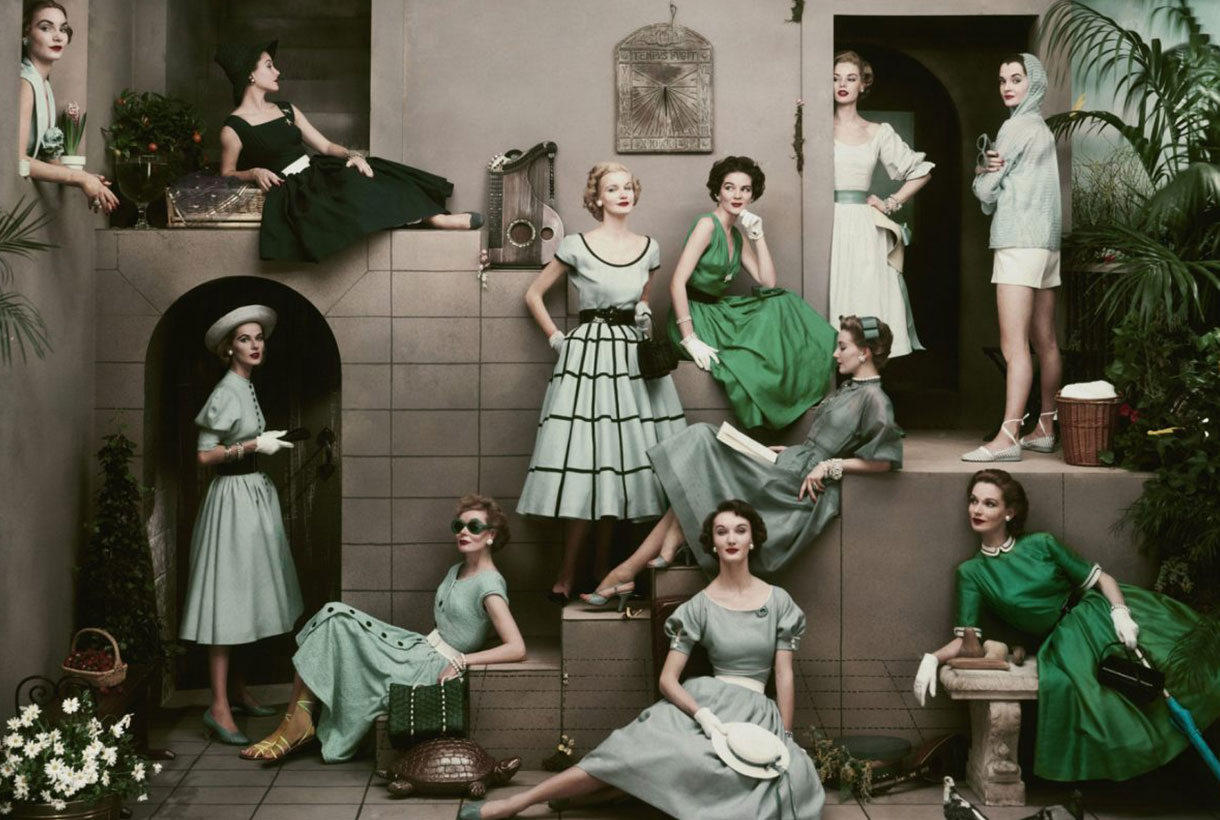
Brief history of green and some symbolism
In olden times it was considered a primary colour , but today , according to the colour wheel of the traditional RYB colouration model, green is one of the secondary colours, those that are obtained from the mixture in the same proportion of two primary colours. Etymologically the word green comes from the Latin ” virĭdis ” which derives from the verb ” virere “, which means “vigorous, flourishing, young”.
During postclassic and modern Europe, green was the colour associated with wealth, merchants, bankers, and aristocracy, whilst red was reserved for the nobility. For this reason, Leonardo da Vinci’s Mona Lisa outfit and the benches of the British House of Commons are green, while those of the House of Lords are red.
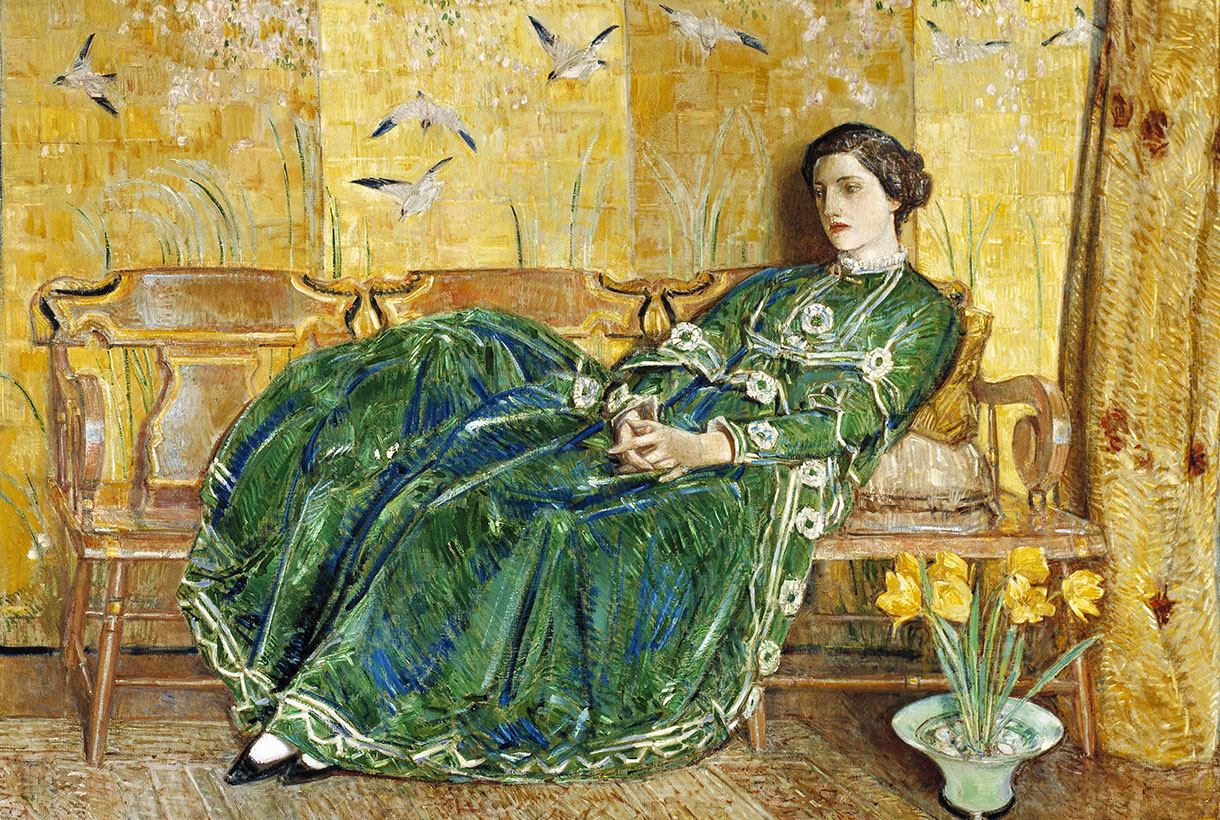
Green also symbolizes the sacred. In 1570, Pope Pius V established green as a liturgical colour, such as white, red, and violet. Of these, green represents the most modest and elemental. Green was also the prophet Muhammad’s favorite colour and is considered a symbol in Islam because it represents the lush vegetation of Paradise. It is no wonder that this colour is found on the flags of almost all Islamic countries. Green also has a long historical tradition as the colour of Ireland and Gaelic culture. It is the symbol of freedom.
In terms of fashion, there is an anecdote related to this enigmatic colour . In 1863, the chemist Eugen Lucius produced an intense green dye, baptized “aldehyde green”, which became very popular thanks to the elegant silk dress worn by the French empress, Eugenia , wife of Napoléon III to attend an opera night. At the time, Eugenia was considered the most beautiful woman in the world, and no one equaled her in elegance. In the light , the green shone inexplicably, which created a sensation among the crowd and immediately became fashionable. Thanks to this success, the German company Höchst emerged, which later put many green dyes on the market, followed by aldehyde green followed by iodine green, methyl green and bitter almond oil green.
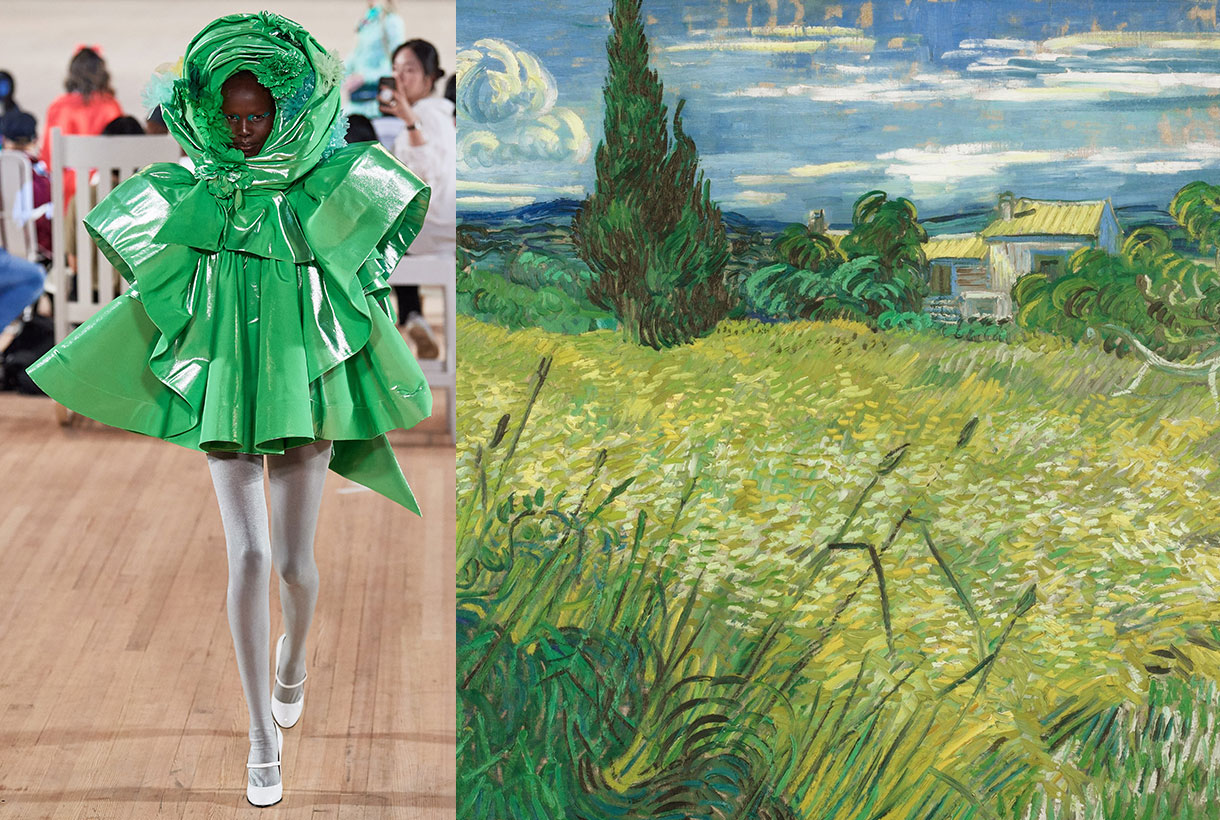
Nature and the environment
Green is more than a colour, is the quintessence of nature, associated with environmental awareness and love for life, the fresh and healthy. Precisely, the political groups that defend the protection of the environment and social justice describe themselves as part of the Green movement, some are called Green Parties. This has led to similar advertising campaigns, as companies have sold green or organic products. Green is also the traditional colour of security and permission; a green light means continue, a green card allows permanent residence in the United States. It is also the colour most commonly associated with youth, spring, hope and in Asian countries, this tone is a symbol of fertility and happiness. Did you know?/span>
Another anecdote is that at the University of Frankfurt am Main, Germany, professors used to wear a gown differentiated by colours according to the faculty, green was for economists and social science students, the colour of growth and prosperity.
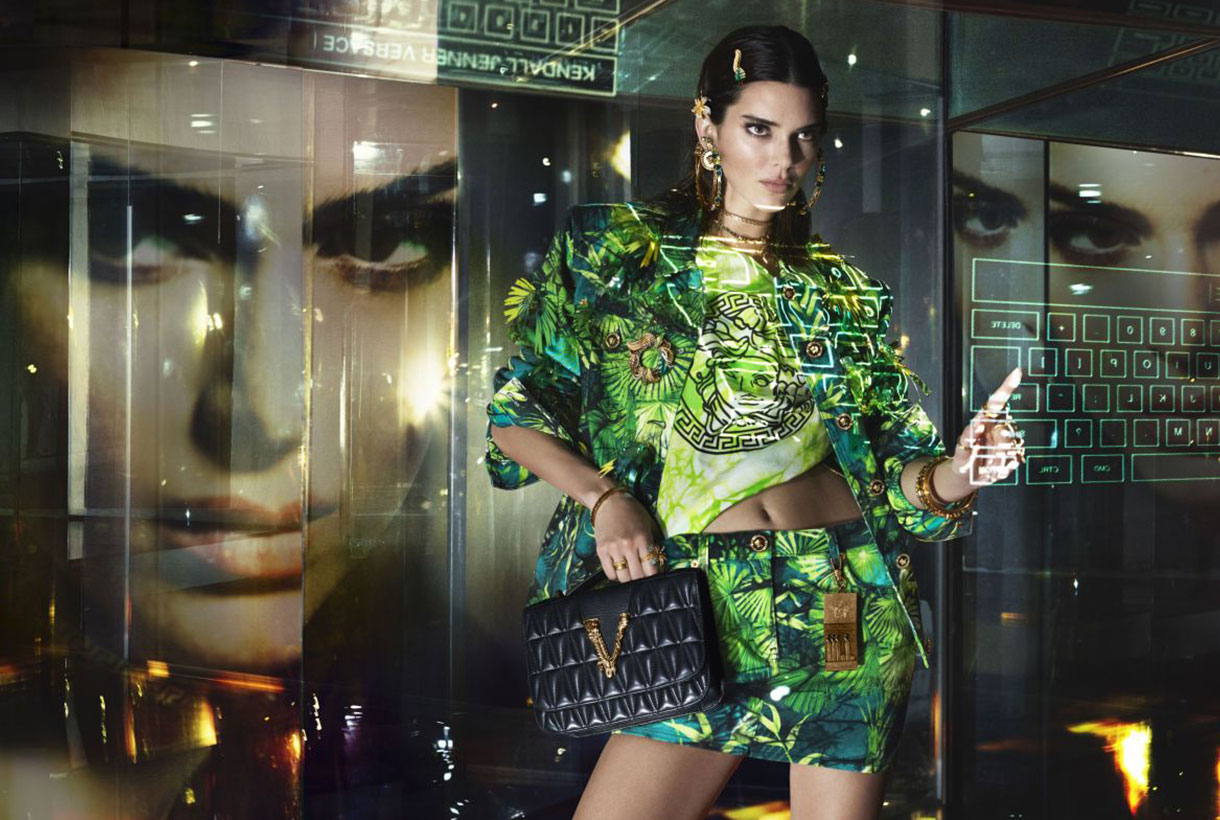
The dark reverse of green
Green provokes in its turn dualities. No one doubts that it is the symbol of life in its broadest sense and that the term itself adds a natural and well-being sense to any activity. Still, it’s funny how the same green in history has also been linked to the unreal, the monstrous, and the creepy. The colour of the dragon, demon, or monster? Their skins exhibit the most “inhuman” colour possible because there are no mammals with green fur. In popular culture, the os aliens also are represented with this colour. Coincidence?
Green is also sometimes linked to bitterness and in England it is closely linked to envy. The expression a look with green eyes does not refer to the colour of the eyes, but to an envious look. A male Gucci colony is called Envy (envy), and its colour is pale green. In France, green is a colour that brings bad luck for superstitious people. If a Frenchman says Je suis vert, he is very angry. Vert de colère, green with anger.
Green is also the colour of poison, and as we said above above, symbol of health-. We imagine poison as a green substance, and colloquial German uses a word made up of “green” and “poison”, giftgrün. Green also became for painters the colour linked to toxicity due to its complexity in the manufacturing process with the mixture of certain substances such as arsenic and other dyes that were harmful to health.
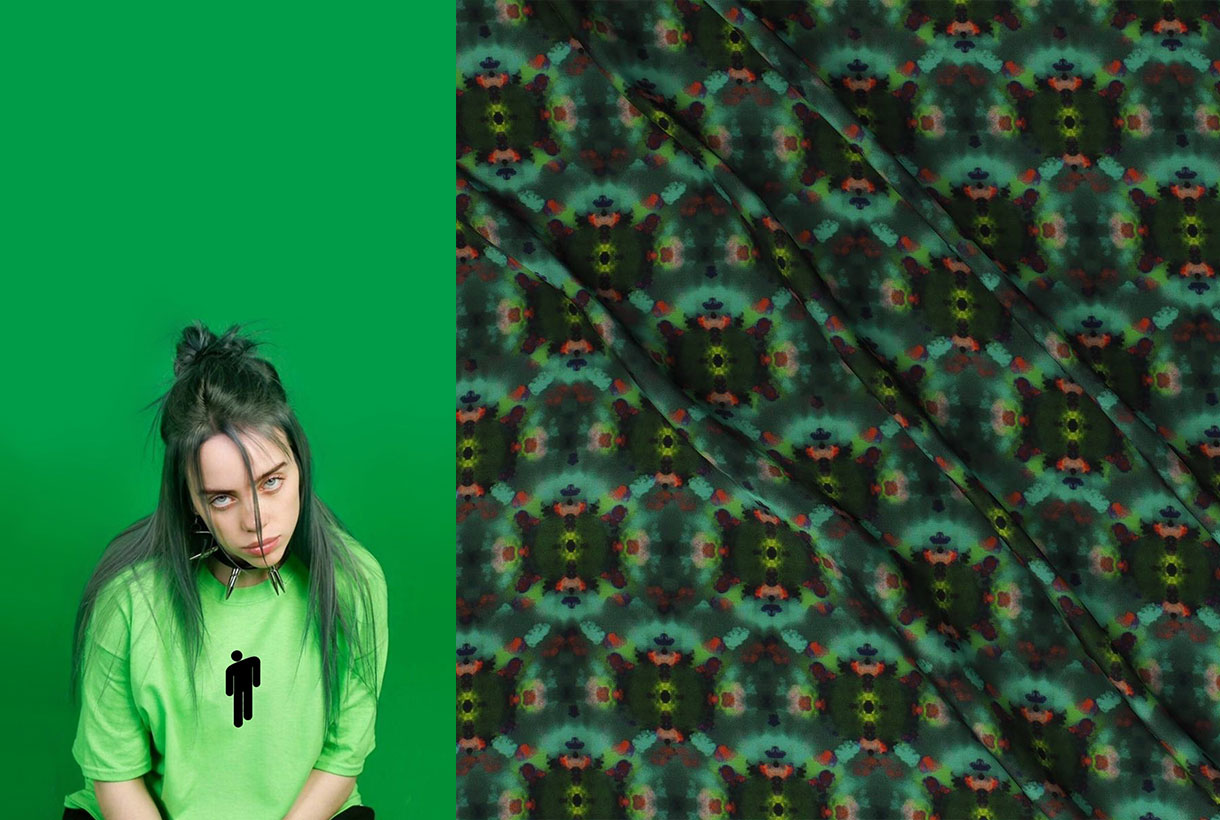
The ragin green news
It is not the usual colour inside the wardrobe, nor is it very common to see in its most vibrant tones. Despite this, there are certain shades of green that are setting trends this Spring – Summer 2020 season and its design potential and combinations are infinite . Either because they have been seen on the catwalks, or on the street worn by artists like Billie Eilish -and her green hair- and the main fashion prescribers. We discover five types of green that are being worn, some of them will have continuity in the next season.
1. Biscay Green
If last year was the reign of pistachio tones, this year the crown is held by the unexpected Biscay Green. A fresh and refreshing aqua green that adorns chiffon dresses and sequined garments.
2. Mint
A pastel green that adds lightness and sweetness to the garments. It is very flattering on tanned skin and ideal to wear in monochrome looks.
3. Emerald
It was the colour of the year in 2013, according to Pantone and in truth, this shade of deep green has never quite gone from the fashion scene. Powerful and hopeful, emerald green brings out its most enigmatic side when paired with pink and violets.
4. Lime
The lime green contiues to be one of the important green trendsetters. Now it comes in its most yellowish version with the Chartreuse and also in its more acidic tones, such as neon green. A striking, bold and regenerating colour.
5. Olive
A light shade that connects with the safari trend of camouflage tones with brown shades that give that feeling of naturalness. It works great with neutral colours.
We encourage you to discover the green tones of the new Spring- Summer 2020 season. Come to our space in Barcelona or access them through the new products that we have already on offer on our online store.




March, like September, is the month of rebirth. From the blooming of the new season that hitherto has been hibernating in our stores, waiting for its turn: the official presentation to society. And we really wanted to show the new collection of fabrics, this time absorbed under the Double Poetry concept.
Double Poetry appeals to poetry that hides duality. A dual year (2020) inspires a spring-summer collection that moves between two waters. On a creative level we are inspired by the antagonisms that are related to each other, especially in work processes: the mental and the irrational, technology and emotion, what develops in a cerebral way and what is guided from the heart. We provide the most advanced technology with poetry and human emotion to create a rational and tangible proposal, but with high doses of sensitivity.
Under this concept of extremes that complement each other, the Spring-Summer 2020 proposal is developed in two directions:

1. A turn to contemporary classics
The classic does not have to be predictable or boring, especially when it undergoes a transformation that shakes and rejuvenates it. We like to get out of our comfort zone with disruptive proposals. This line contemplates fabrics that retain a certain timeless primitivism. They are easily recognizable products, close to the domestic and that convey security and everyday life: wear a Jacquard out of the festive season or look for a type of cotton that conveys a message, why not? A range of traditional fabrics (drapery, tweeds and wool items are coming back), some of them rustic looking and which interact with the latest technologies to include us in contemporary fashion.
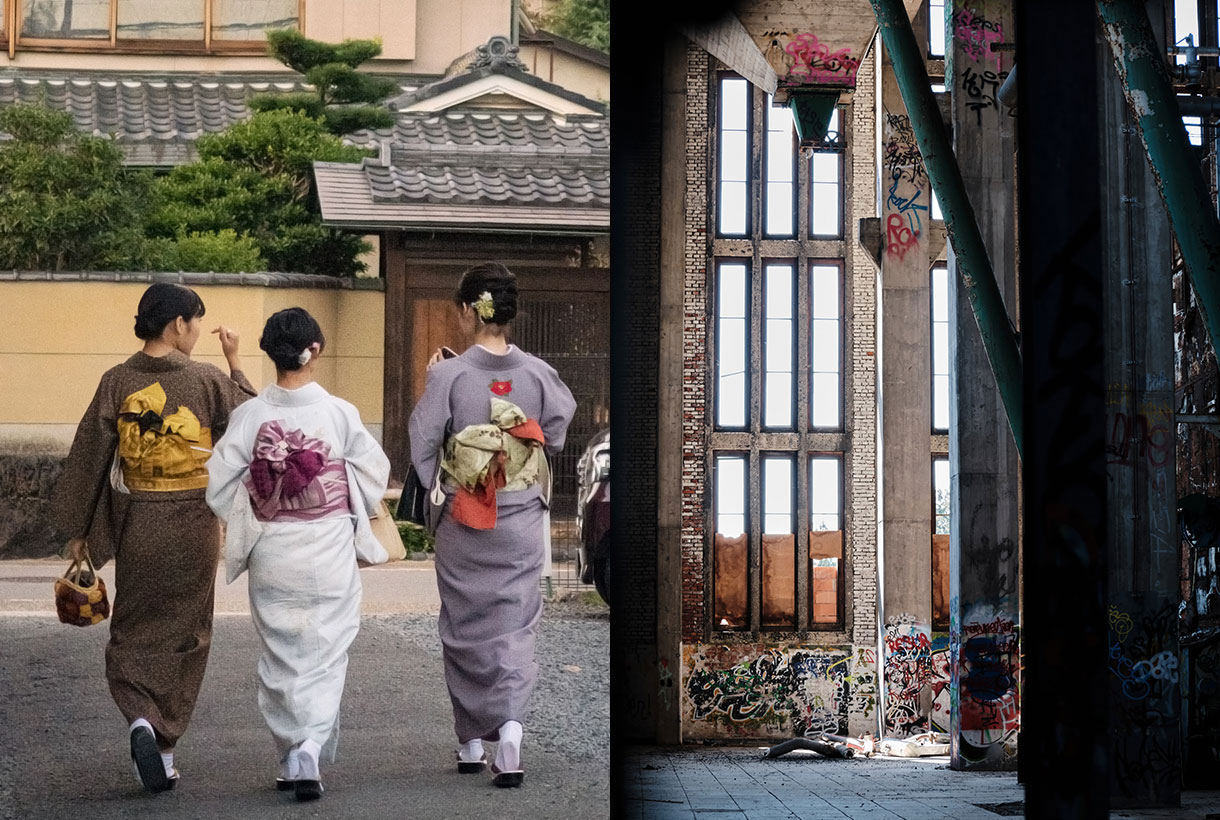
Within this line the tactile fabrics are grouped, with certain reliefs: granulated, obvious crepes, flamed, flexible volumes, synthetic glitters, silver lurex worked in a delicate way and without stridencies. These products stand out because they seek to enhance the beauty of the raw material. They are handmade and rustic fabrics, but at the same time technologically sophisticated and they show these imperfections (reliefs and volumes) with pride. In terms of design, contemporary classics are inspired by the ethnic universe in a minimalist key: in a natural folk style with firm strokes, sinuous and organic shapes. This category also abounds with repetitive, almost elementary geometries, with or without symmetry: clean frames and essential stripe patterns. Finally we are not forgetting floral prints with delicious compositions with petals and motifs that are inspired by the surfing universe of vibrant colours.
In this first block neutral tones abound, an earth palette with golden nuances, the unbeatable black and white or navy blue combinables.

2. An ode to the urban landscape
The second address of the Spring-Summer 20 collection puts us in an urban environment. The city as the core of human relations. We seek that direct connection with our glass and concrete home and within this line we embrace experimentation with surprising combinations of materials and textures with vital, luminous and energetic colours that can be confronted face to face to create an interesting dialogue in tune with the urban landscape.

In this second block fabrics of a young and fresh luminosity abound, with intelligent and emotional shades at the same time. We seek to appeal to the emotions with this mix and we let ourselves get carried away by intuition. Thus the fabrics we are suggesting stand out for their evidenced volumes, they are dense in appearance, with artificial compositions and elegant textures for a seduction that enters daytime terrain. Feminine and fluid fabrics with light and fresh reliefs because we want to communicate energy and spontaneity through the materials. In turn the products have a clean appearance, technical touches only in finishes and they have a spontaneous and energetic design for a look that stands out within the city. The fabrics seek some theatricality and joy with giant graphics for the outdoors, aquatic reflections and botanical-inspired prints. A line that encourages us to rethink aesthetic codes and experiment without questioning the beauty or the need for the final products.
In this second block mineral colours abound ranging from blue to pale pink or lavenders, oranges and a palette of greens and limes. Vibrant tones that are exhibited for their own sake.
We invite you to discover the new Spring-Summer 2020 collection through the online store or in our Gratacós space in Barcelona. Let yourself be seduced by the materials, textures and patterns of the fabrics!


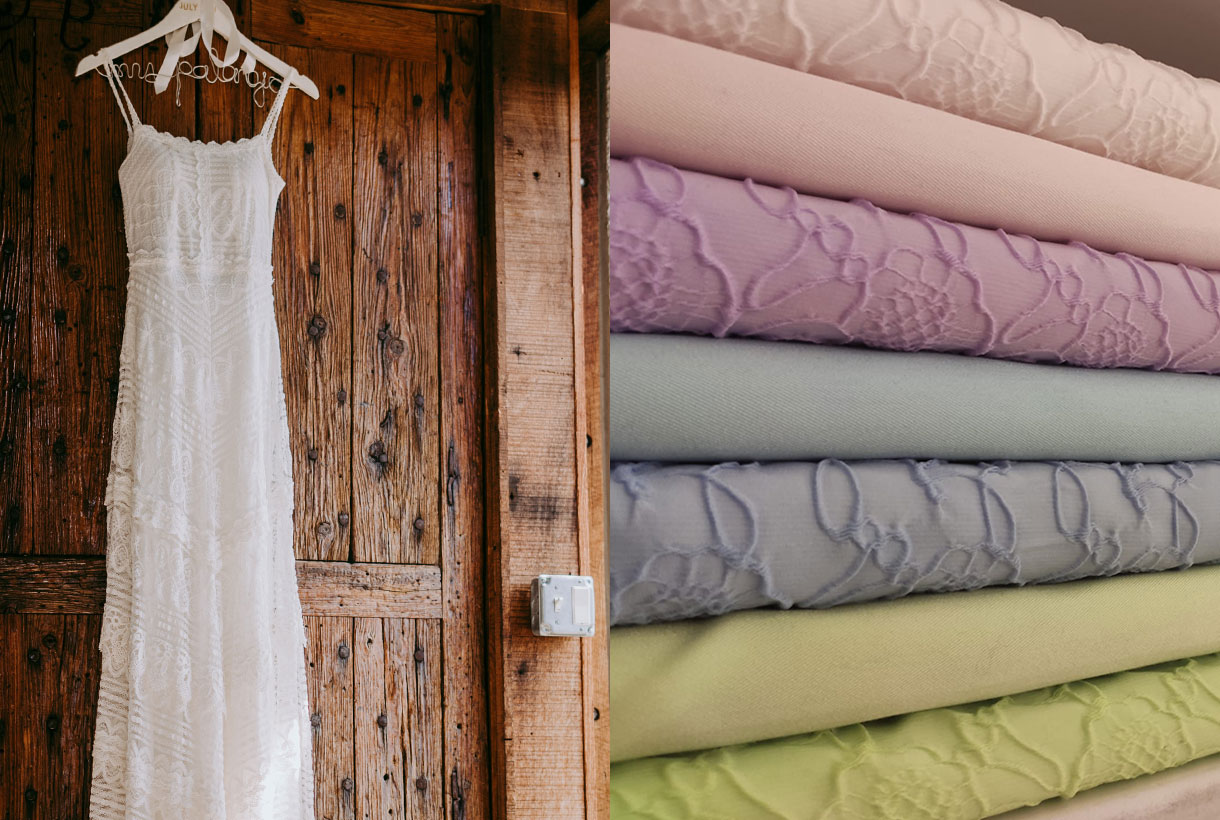

Loved and hated in equal parts, plastic produces controversy by its very nature. Omnipresent in our current society, overexploited and with a great transformative capacity that encourages recycling, it is a material that hit-hero has been essential.

In fact, if we talk about the use and generation of materials that have surrounded humanity in recent history, plastic has undoubtedly been one of the protagonists of the twentieth century. This material has defined an era and is still present in people’s daily lives. Whether we like it or not it is a fact that plastic is everywhere, it is part of our lives and its use is taken for granted in all sectors. Its use has been global since the 60s in all kinds of everyday objects and in truth there was a time when its properties were praised, for durability, flexibility and lightness. Who would have said that we would end up drowning in a sea of plastic? The figures speak for themselves, globally since 1950 more than 8,000 million tons have been generated and the scariest thing is that half of this amount corresponds to the last 15 years. At present almost 40% of production goes to single-use packaging and wrapping. Here lies one of the big challenges of the 21st century: to find a way to re-use all this generated waste in order to give it a second life and a new use.

Plasticized fashion
It was inevitable to think otherwise. Plastic has also seduced the fashion industry and its use prevails as a trend by international brands. At first this seems like a paradox: the more the reports about its extensive production are known, the more it is introduced into the collections of the great designers. It is not something new; in the 60s and 70s, André Courregès, Pierre Cardin or Paco Rabanne used plastic in their creations to elaborate the most innovative and modern pieces of the moment under an inspiration of futuristic retro-aesthetics. This trend gave the nod to the space age that was a feature of the time. These garments were not transparent and used materials such as glossy vinyl or PVC to configure the clothes of the ye-yé generation.
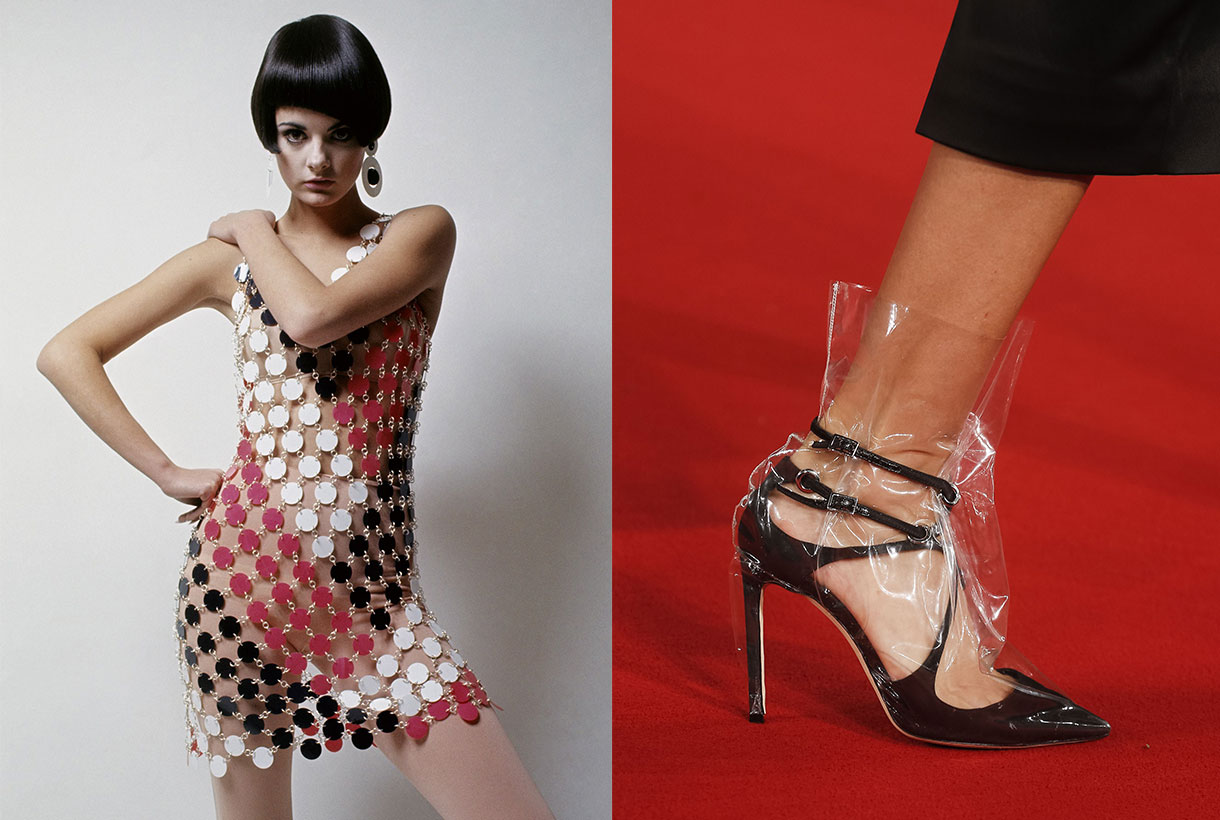
A couple of years ago plastic fever again caused a furore in the fashion industry, which experienced a kind of revival with several companies opting to use plastic as a wearable material, whether in clothing or accessories. An aesthetic component was added to the plastic: in the middle of the Instagram era, it allowed a total display of the privacy of the wearer. The collection presented in February 2017 by Raf Simons in his debut at Calvin Klein was especially outstanding, where coats and raincoats covered with vinyl were displayed, as was also the case with classic Chanel, led by the late Karl Lagerfeld. The kaiser included not only plastic accessories, but also added shoes and garments that combined plastic with other materials. Céline also opted for a plastic bag like the ones used in supermarkets, but which was transparent. During 2018 this was a real object of desire among influencers and fashion fans as well as Demna Gvasalia, the irreverent creative director of Balenciaga, who went for a square, striped and colored bag which resembled that used in supermarkets -a best-seller. For his part, Virgil Abloh, creative director of Off-White, made all fashionistas sigh for their black salons lined with transparent plastic – the fetish object of the moment!
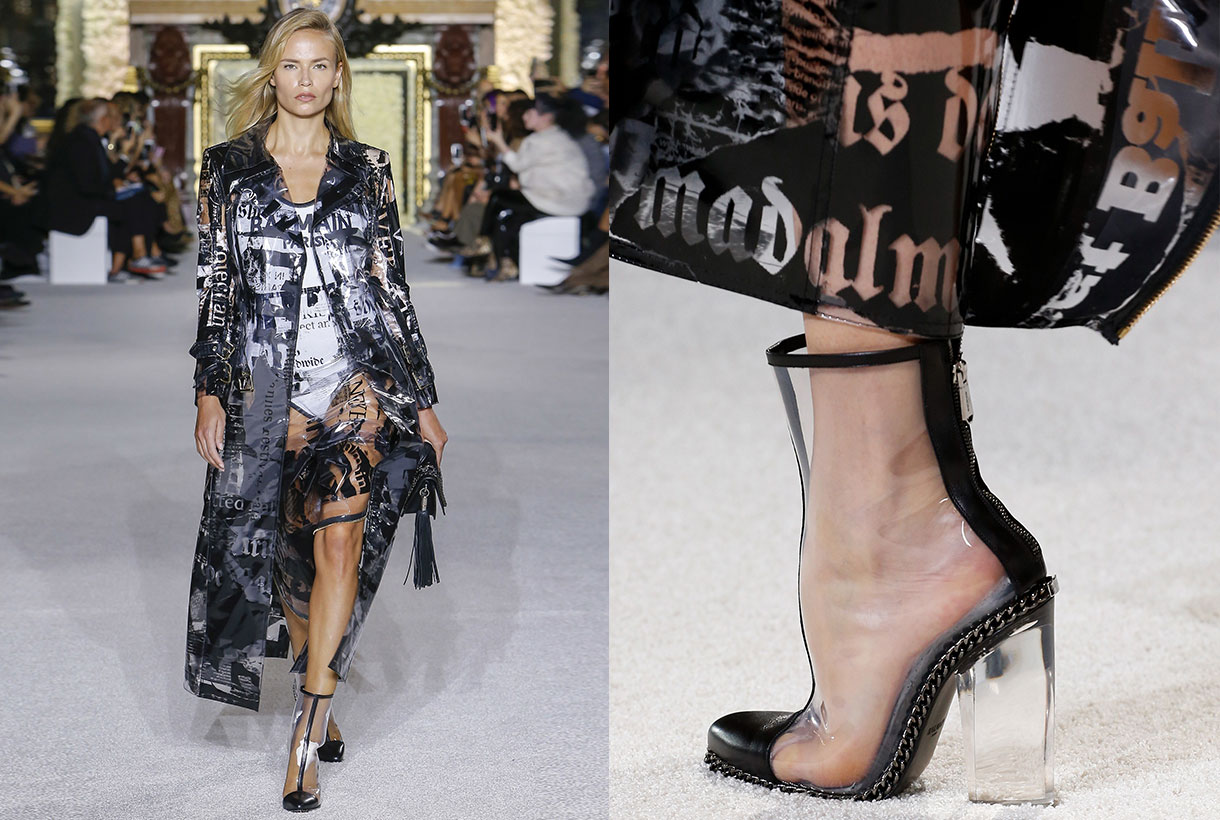
Plastic yes, but recycled
In the midst of this hegemony of plastic there is also a counter-current formed by those companies that present alternatives, thinking about how to re-use existing material. This situation coincides with the governments fight against plastic pollution and a greater awareness and social commitment among the population. The discussion does not focus so much on the use of the material itself but on the continuity of its production and the greatest challenge today is to be able to re-use it, taking advantage of its existence and its very long life cycle, discovering ways to regenerate it and transform it with the least possible impact.
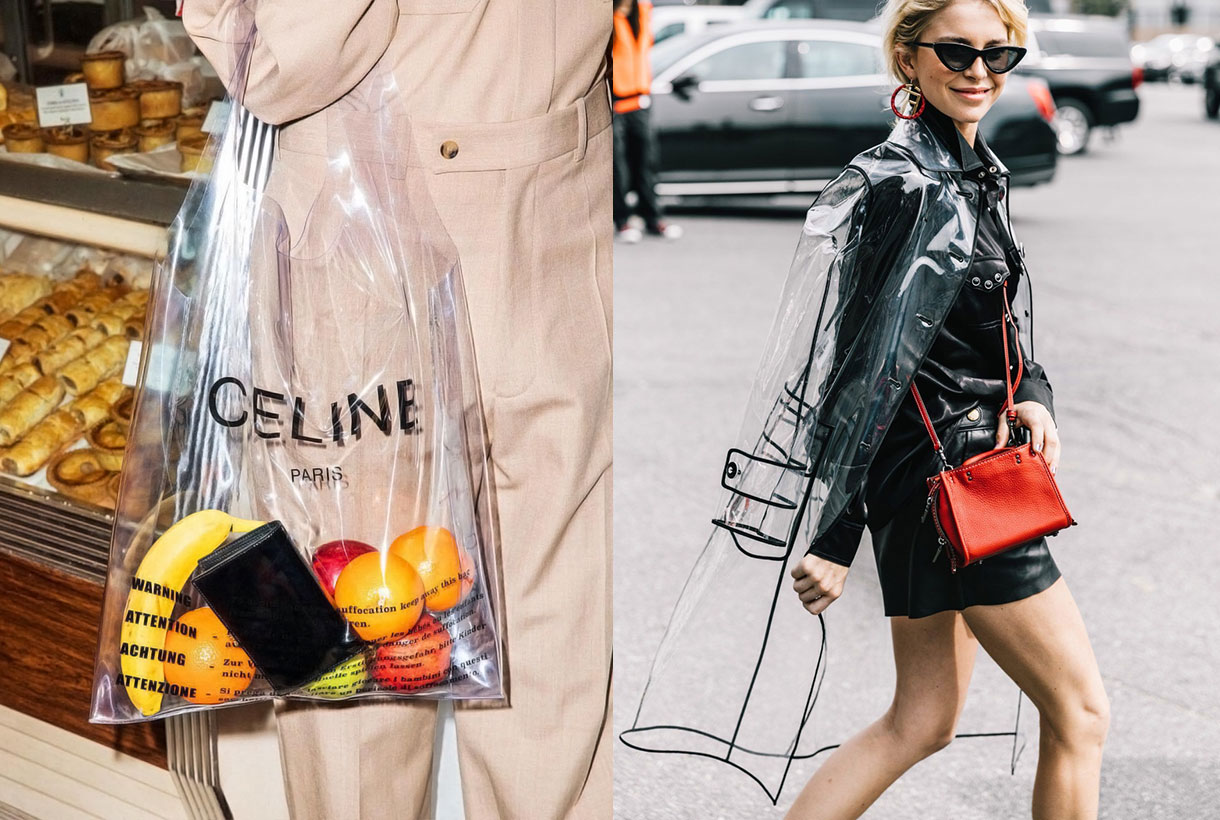
There is a vocation for change. In recent years leading fashion designers have been investigating and working on new developments with used plastic. One pioneering example was the sustainable design task of the renowned Stella McCartney with the organisation Parley for the Oceans to develop sports shoes for her Adidas line. In parallel there have also been a host of small but growing brands which take advantage of the fibres from recycled plastic in order to create new clothes and accessories. Such companies already offer a sustainable alternative in order to generate zero waste from the plastic already produced. The era of real recycling is beginning.

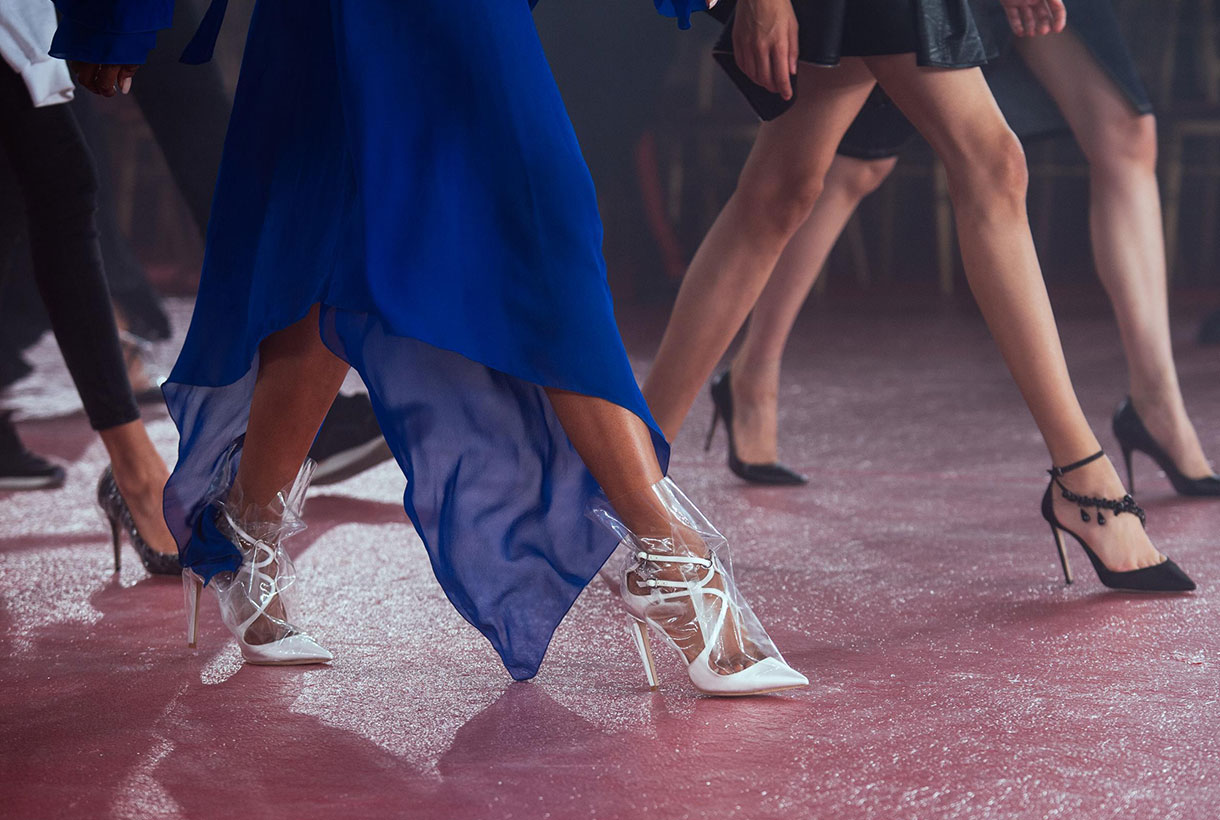
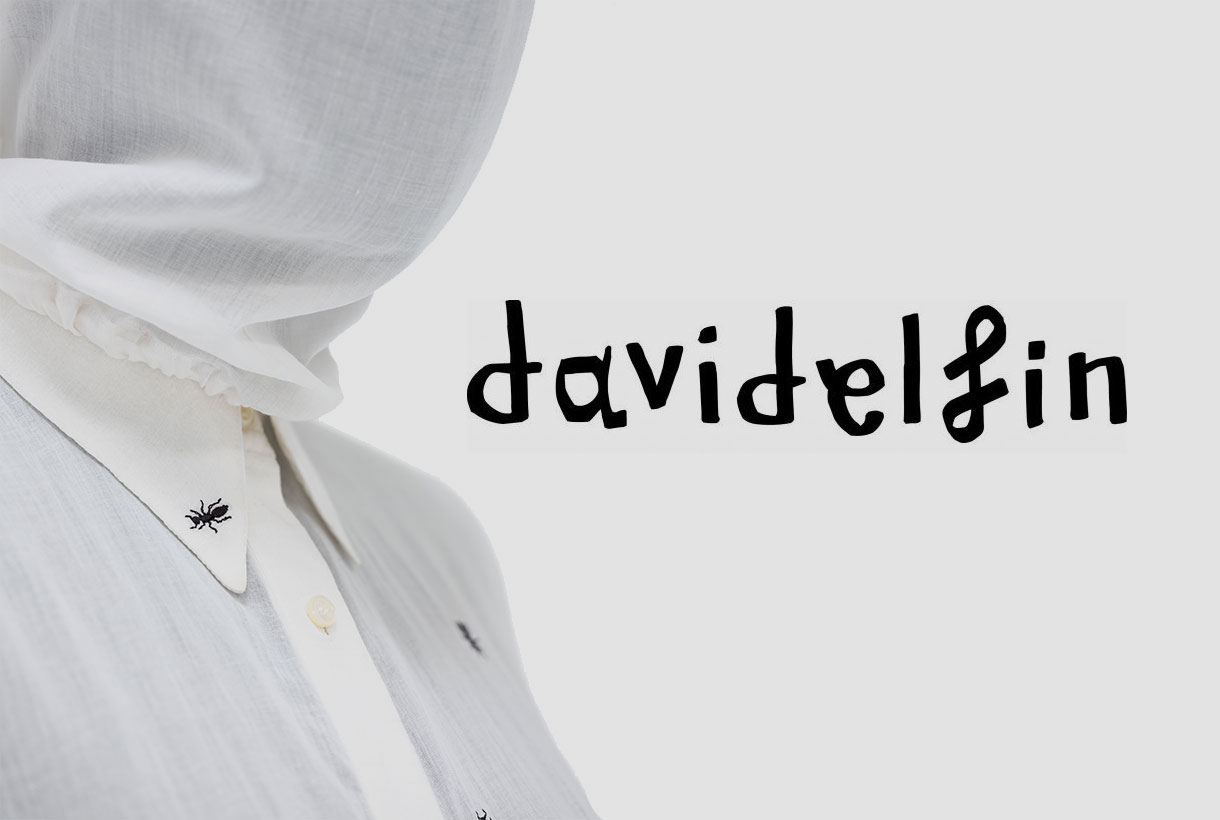
He was one of the great voices in the history of contemporary Spanish fashion, a transgressive and complex designer of hugely demanding artistic work, characterized by androgynous designs that blurred the line of fashion genres. David Delfín left us all too soon: a brain tumour took him at age 46 in 2017, leaving Spanish fashion orphaned.
The designer from Malaga represented, like no other, the emergence of a new generation of young designers who arrived with the millennium, and who conceived of fashion in an interdisciplinary way. David made his project David Delfín with the Gorka brothers, Diego and Deborah Postigo, and his muse and friend Bimba Bosé-, a creative platform in which different forms of artistic expression coexisted, such as photography, performance, video , music and fashion.
Now David Delfín has entered the museum and does so in 2020 when the Malaga designer would have turned 50 and would have celebrated 20 years since his first collection. Without doubt these are round numbers. The exhibition, which becomes his first major retrospective, features the key artistic ideas of David Delfín via more than 60 pieces and can be visited in the Sala Canal de Isabel II in Madrid.

A tribute to the designer from Malaga
The exhibition, curated by Raúl Marina, covers David Delfín’s creative career, starting from Sans Titre (1999), his first collection not planned as such, but as a pictorial exercise in search of new support. It also includes the controversial Cour des Miracles (Spring-Summer 2003), a collection that set the Madrid catwalk alight by presenting models with shaved heads and some with nooses around their neck, a creation which was misunderstood and dealt a hard blow and some revulsion towards the continued defence of his creative universe.
His career is reviewed through 60 of the most iconic pieces ordered chronologically, revealing the freshness, the contemporary nature and the singular hallmark of this charismatic designer from Malaga: dresses with bandages, ant embroidery, cross stitch hearts or military jackets. The calligraphy of David Delfín was also singular: he wrote with his left hand, the useless hand he wanted to turn into something useful. In fact, all of his creations are rooted in his references, his ideas and emotions about fusing fashion with art, from psychoanalysis to the exploration of perversion and duality via the cinema of Luis Buñuel, the surrealist movements or René Magritte’s paintings.
For this reason, in order to explore the entire universe of the charismatic designer, photographs, videos, writings and various archive materials, both personal and work, have been included in the exhibition. It seeks to present a global vision of David Delfín, enabling us to understand how these ideas were embodied in the garments via his influences, his unmistakable style, chromatic range and care in pattern-making.
The exhibition will be open to the public until 10th May.


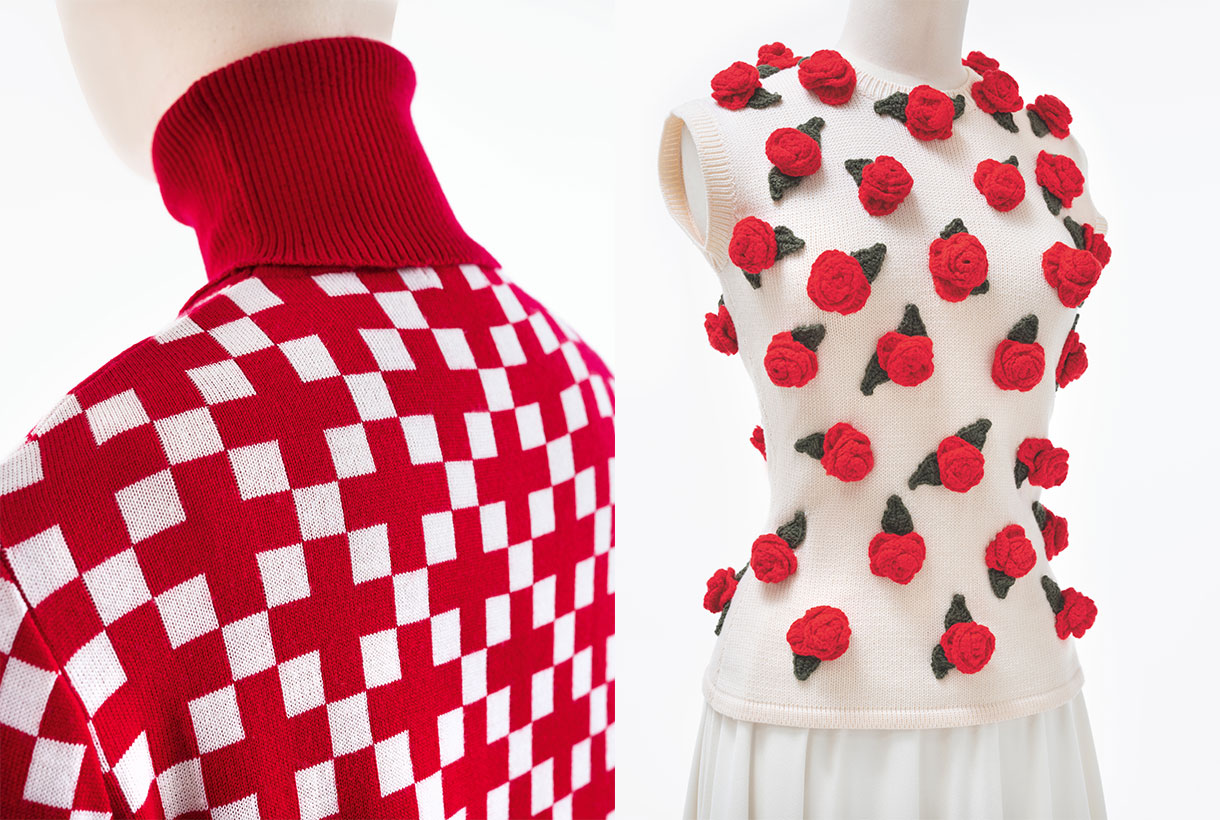
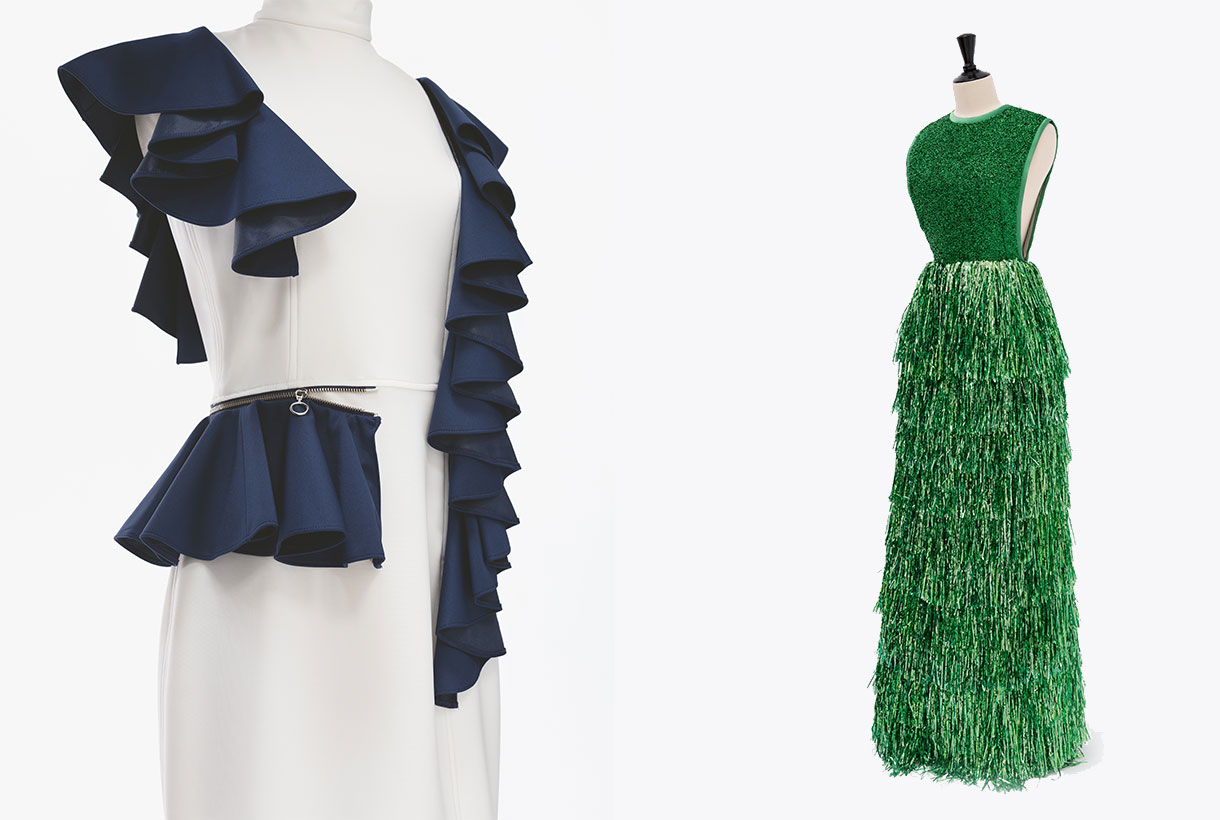

And after Madrid it was the turn of the fashion week in Barcelona with the new edition of 080 Barcelona Fashion held, as usual, in the Modernist Venue of Sant Pau. This year the Catalan catwalk did not have as many designers or brands as previous editions, but the initiative covered these local absences by reaffirming its commitment to international companies and the inclusion of new exhibition formats of the collections that adapt to the needs of the smallest of small designers. Once again at Gratacós we are following some fashion shows of designers who rely on our fabrics to come up with their proposals for the next Autumn-Winter season. These were the most hunted looks!
Eiko Ai
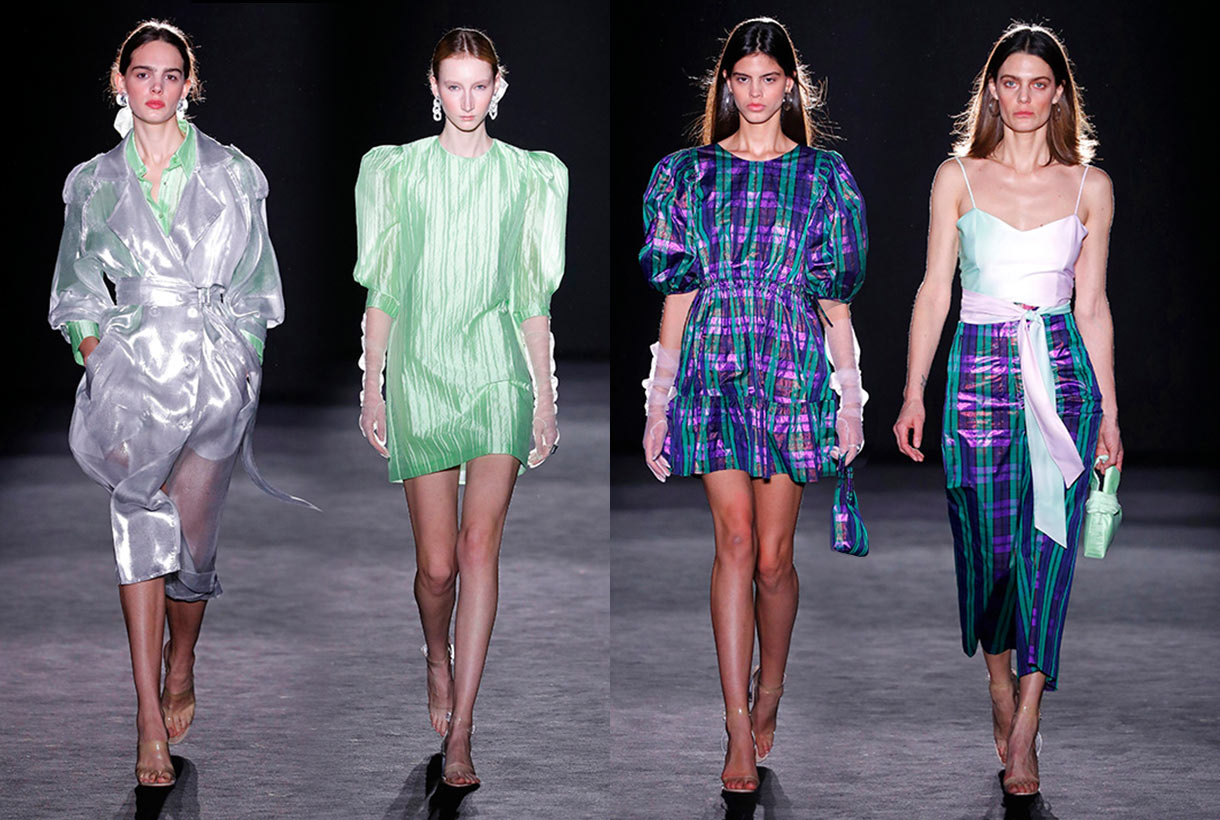
This young Barcelona firm debuted on the Catalan catwalk with ‘Quantum One’, a collection inspired by quantum energy and the unity of the cosmos that represents an evolution of its previous proposal. It was a feminine creation with a galactic theme, where several Gratacós fabrics were on display in a range of textures and transparencies: organza, flocking, jacquards, metallic finishes, sequins, technical fabrics, steams, satins and crepes combined with floral and geometric-inspired drawings with a print that precisely evokes those magical worlds.

The stars and flashes of the Milky Way influenced the colour palette with shades full of light, artificial colours, lilacs, mints and off-white looks. From out of the immense darkness of space emerge jet black and midnight blue. And from the planets and cosmic materials come the reds, nudes and deep pinks.
En su conjunto, Eiko Ai designed a whole collection inspired by a daring and feminine woman with delicate designer clothes and a contemporary spirit which stand out for their artisanal creativity as well as for the quality of materials and local production.
Menchén Tomàs

The sophisticated note of the latest editions of 080 is added by Menchén Tomàs. This time Olga Menchén was inspired by the busy night-life of Manhattan in the 70s, just at that time of sunset, when lawyers, brokers and office workers have left the streets and when with nightfall other characters appear on the scene, from diverse classes, cultures and origins such as millionaires, the homeless, artists, DJs, pimps and prostitutes … A mixture of disco, decay, drugs, the gay scene, the mythical Studio 54…

To shape this amalgam of people and nocturnal inspirations, Menchén Tomàs came up with a creation full of flared trousers, sleek jackets, billowing short dresses, oriental-inspired pieces, never-ending collars, embroidery, bias and lace finishes. They highlighted fabrics that radiate light, others hand-produced and embroidered, together with unique prints.

The colour palette used was intense and contrasted with impossible mixtures of great visual impact: pistachio green with fuchsia, pink with purples, glitters, sequins, and, of course, black and white.

Juanjo Villalba
Juanjo Villalba Bermúdez opened the last day of 080 dedicated to capsule collections presented in more free and open formats than in traditional parades, with more scope for the creativity of each designer via presentations that resemble artistic performances. This designer took advantage of his participation in the Catalan catwalk to present his personal project: ‘Emotional mythology’ through 12 looks which at first sight seem unrelated but whose detail maintains their essence. Each look represented a love story told through the costumes and where each model represented a divinity. At the end of the parade attendees could view the collection from close-up and touch the garments directly.
Emotional Mythology was Villalba’s letter of introduction as a designer -before that he was working in fashion marketing- and it was a throw of the dice which opened up new professional opportunities in the fashion industry.
Miércoles 05 febrero 2020
Sorry, this entry is only available in Español.
 We often focus on fashion shows as a centre of analysis of the latest trends in colour and trend-setting fabrics, although we do not deny that it is on the red carpet of major events related to cinema, fashion or music where these trends crystallize, through impact looks that also influence what will be worn during one season or another. These costumes or dresses worn by the artists of the moment are not chosen at random – or not at all – but are also part of the machinery of the industry itself in order to define the main features of the season. Designers choose, celebrities wear thelook and consumers buy. Everyone plays a role in this ephemeral sector.
We often focus on fashion shows as a centre of analysis of the latest trends in colour and trend-setting fabrics, although we do not deny that it is on the red carpet of major events related to cinema, fashion or music where these trends crystallize, through impact looks that also influence what will be worn during one season or another. These costumes or dresses worn by the artists of the moment are not chosen at random – or not at all – but are also part of the machinery of the industry itself in order to define the main features of the season. Designers choose, celebrities wear thelook and consumers buy. Everyone plays a role in this ephemeral sector.
On a purely national level the red carpet of the Goya 2020 Awards was one of the most recent events, which highlighted an extensive cat-walk of trends with specific styles, couture, colours and fabrics. The event, apart from being the big night for Spanish cinema, is also important with regard to fashion, where many designers bring out their latest creations, each represented by his or her best muse. We analyze some of the trends, setting out the looks that impressed us most.

The return of the classic style
Never underestimate the power of classic style with elegant silhouettes of retro spirit, inspired by the outfits of old Hollywood glories. Actresses Marta Nieto, Belén Cuesta, Belén López or Andrea Duro have opted for this purist return with black and white styling, one of the most iconic and infallible duos that exist in fashion. And obviously they have triumphed stylistically on the red carpet.
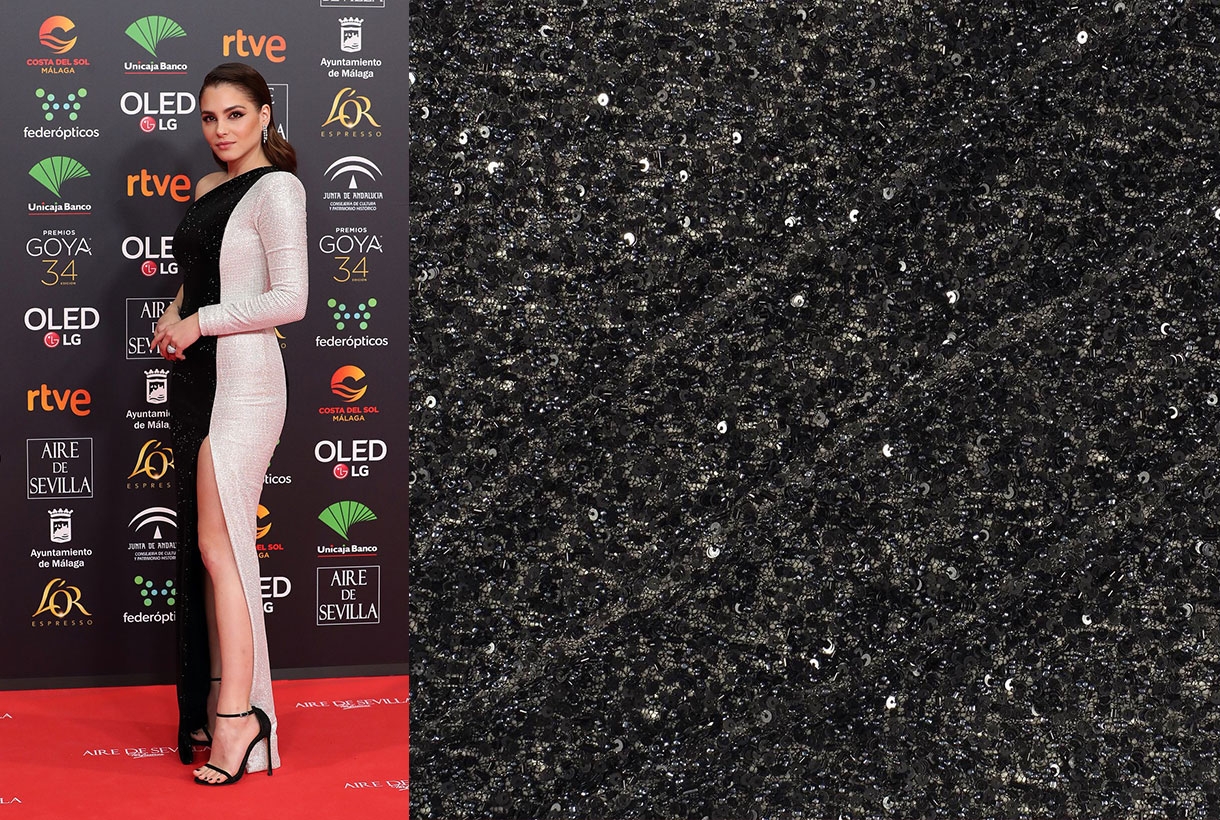
Andrea Duro wore an asymmetrical dress in bright black and white fabrics from Philosophy di Lorenzo Serafini. Belén Cuesta, Best Leading Actress for her role in ‘The Infinite Trench’, was without parallel in a twin-coloures Pertegaz dress of classic features. Highly commended for her elegance was the asymmetrical dress of Marta Nieto, nominated for the Goya Award for Best Leading Actress for her role in ‘Mother’ by Jorge Acuña. Another outstanding look was that of Belén López with Antonio García’s dress in ivory and black satin together with turtleneck in embroidered tulle with Swarovski crystals.

White too
White dresses, sometimes with slight shades of colour such as skin-tone, ivory or broken, were also a feature. Clear shades that ally with the neutral ones on a red carpet were no surprise in this edition, given their excessive colour. The splashes of colour , especially at the beginning of the red carpet, have been anecdotal, and it seems that the guests have found security in the neutrals, those recurring shades that are always infallible and that practically never go out of style.
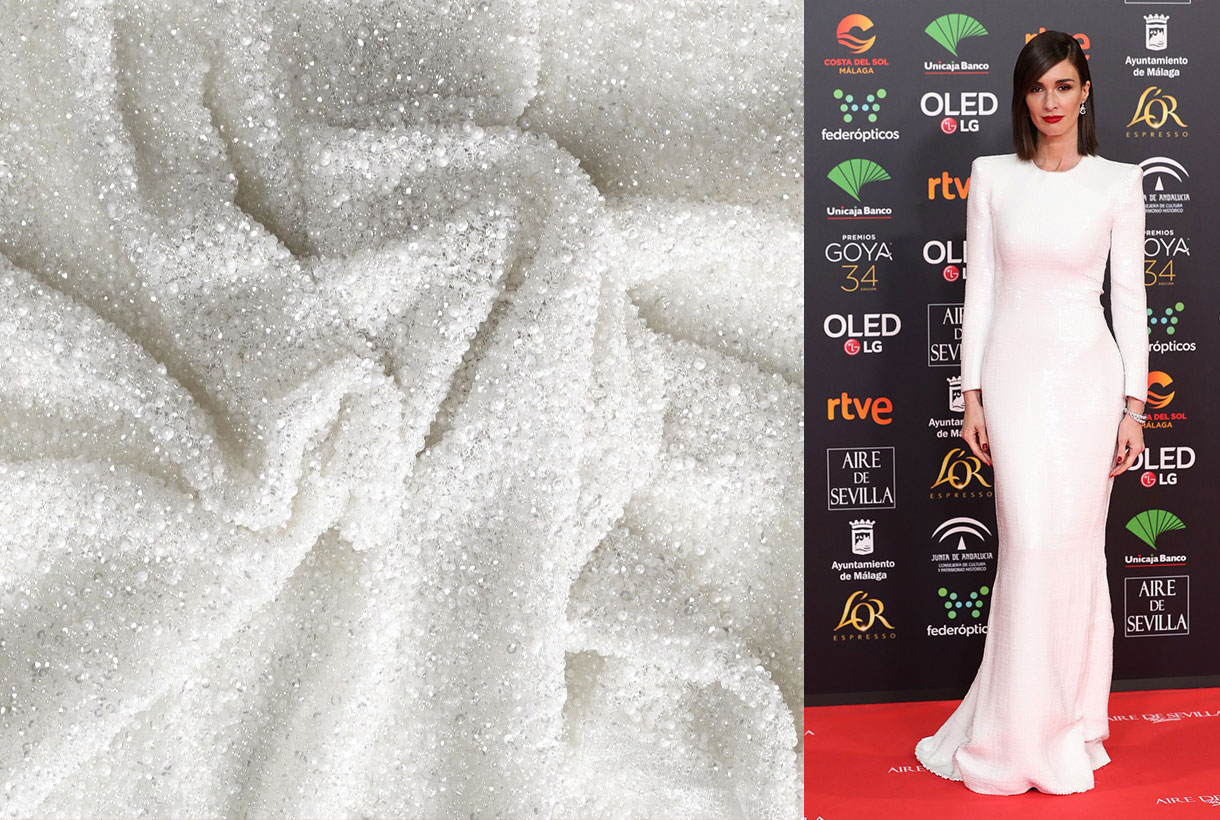
The actress Paz Vega wore white, with a design created exclusively for her with shoulder pads, mermaid silhouette and sequins for the final touch of brilliance. Barbara Lennie was also in a white dress with contrasting back tie by Carolina Herreraas was singer Najwa Nimri with lace dress by Loewe and swimmer Ona Carbonell with a plain model with pronounced front slit by Miguel Marinero.

Sparkles in old gold
Within the neutral field metallic dresses stood out, especially those that opted for golden shades. To enhance their natural shine they were accompanied by sequins along with other details such as embroidery and feathers.

This tone linked to luxury and power was chosen by actress Clara Lago with a spectacular flake print dress by Oscar de la Renta Prefall 2019, Goya Toledo with embroidery and transparencies by Elie Saab, Marta Etura with a brilliant dress by Gabriel Lage and Ana Mena, who mixed sequins and feathers with a Rubén Hernández look.

Emerald
Emerald green was, together with the colour red, one of the vibrant shades that dazzled on the red carpet of the Goya 2020. It is a hue that hides a powerful meaning since it has since time immemorial represented happiness, life and obviously, hope. It is a fresh and radiant shade associated with spring and, therefore, with youth.
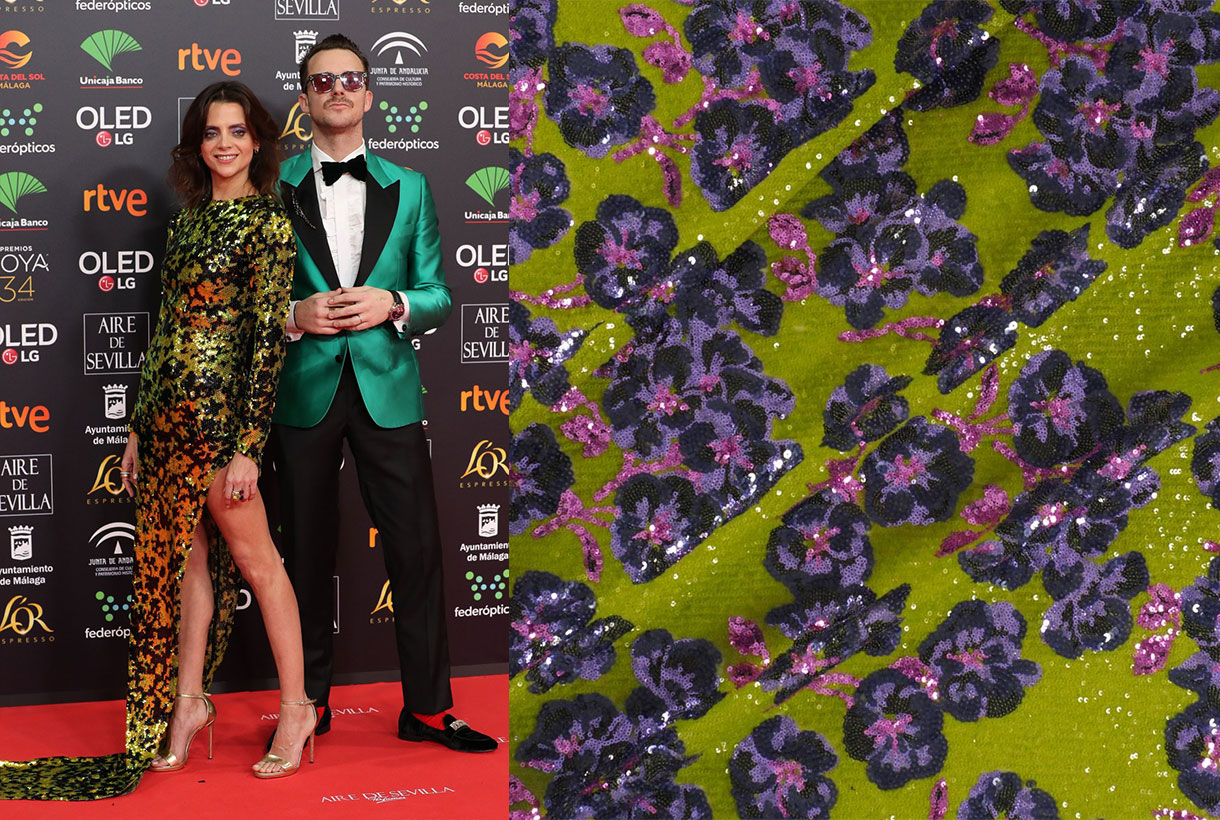
The most daring couple of the night, chromatically speaking, were actress Macarena Gómez with asymmetrical floral sequin dress by Teresa Helbig and her husband Aldo Comas with Avellaneda silk jacket, trousers and shirt by Loro Pianza. Nieves Alvarez wore emerald green with her innate elegance in a plumage type dress by Alberta Ferretti Limited Edition, as did Nicole Kimpel in a Pronovias word of honour dress.
Gratacós are also attaching some fabrics inspired by these looks so you can dream of making your own creation. Are you already imagining it?
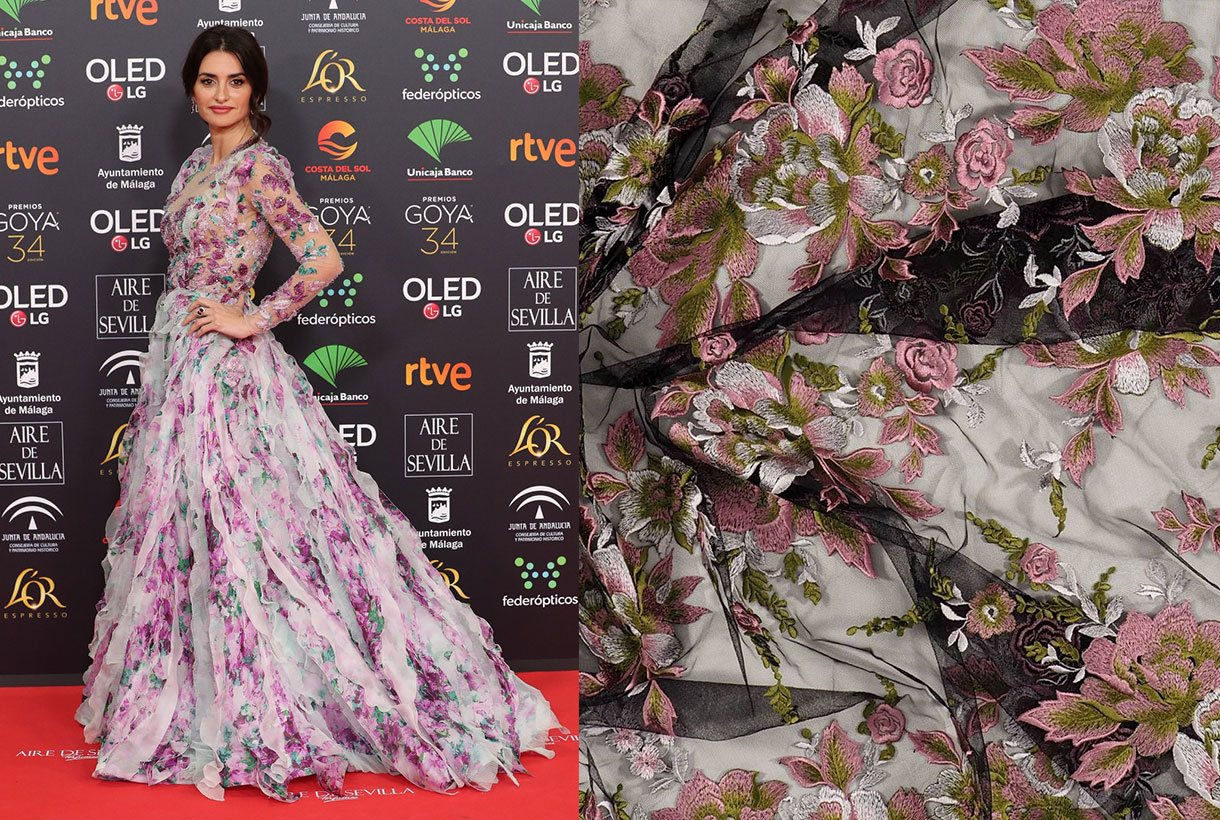




The catwalks of Madrid and Barcelona are both preparing their Spanish fashion week, where the best designers on the national scene will meet to present the Autumn-Winter 2020/2021 collections. As usual, at Gratacós we will be giving close attention to the new fabrics that will be presented on the catwalk in the form of original creations. Designers who trust in us always surprise us!
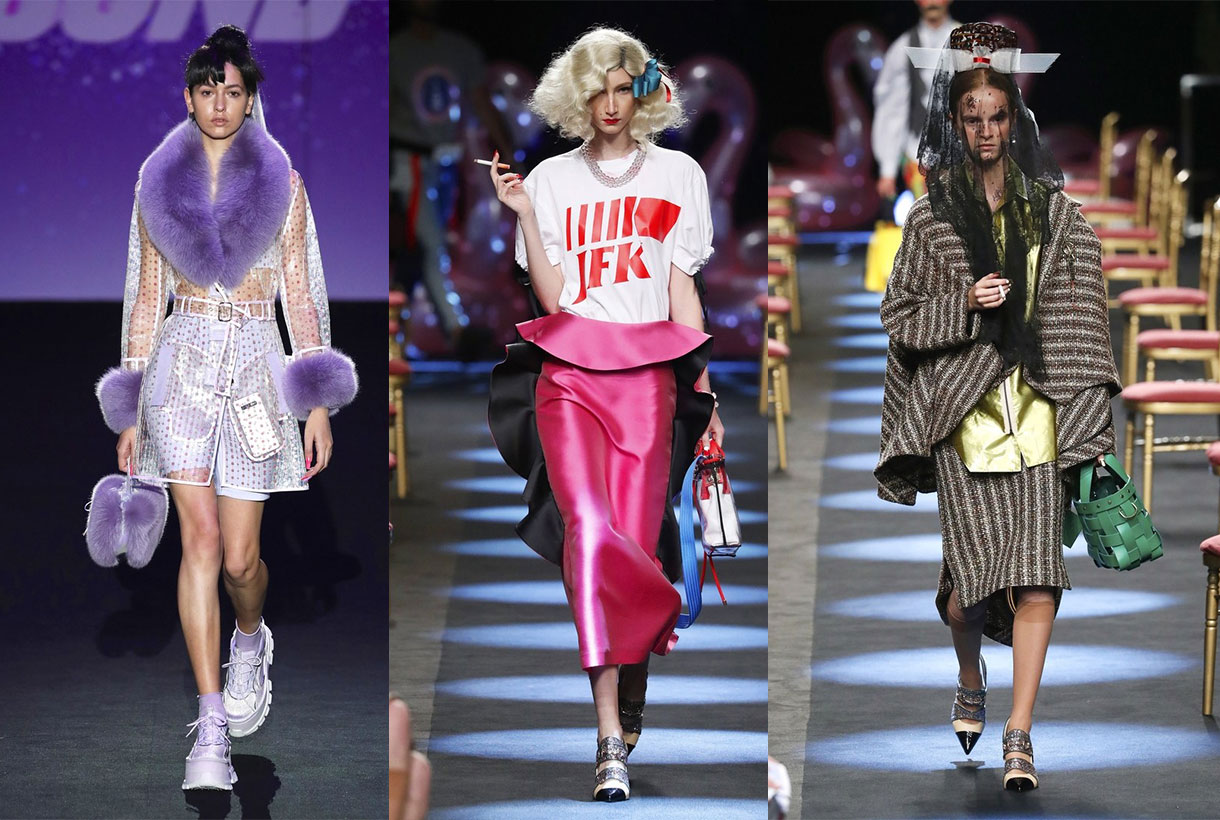
Mercedes-Benz Fashion Week Madrid
Mercedes-Benz Fashion Week Madrid is preparing a new edition with the participation of three key names in Spanish design that increase its range: the return of Pertegaz, which will the first time take to the catwalk and will do so with the signing of Galician fashion designer Jorge Vázquez; the Seville company Fernando Claro and Dominnico, which will be an extensive feature of the MBFWMadrid catwalk. These three companies are the highlights of the fashion event that will be held between January 28 and February 2 at IFEMA. Along with the new additions, the composition of the parade calendar is made up of 37 leading Spanish designers and brands such as Ana Locking, Devota & Lomba, The 2nd Skin Co, Agatha Ruiz de la Prada, Pedro del Hierro, Custo Barcelona, Angel Schelesser, Brain & Beast, Devota & Lomba , Andrés Sardá, Juan Vidal, among others. This edition of Mercedes Benz Fashion Week Madrid will also have a tribute to the designer Andrés Sardá, who passed away last September.
In this case, for the Madrid catwalk we will be following the Dominnico and Brain & Beast parades live and focus on the looks of Moisés Nieto, Mans Concept Menswear, Angel Schelesser, Ulises Mérida, Juan Vidal, Beatriz Peñalver, The 2nd Skin Co, Eduardo Navarrete and Teresa Helbig, who in turn will present the new designs for Iberia.
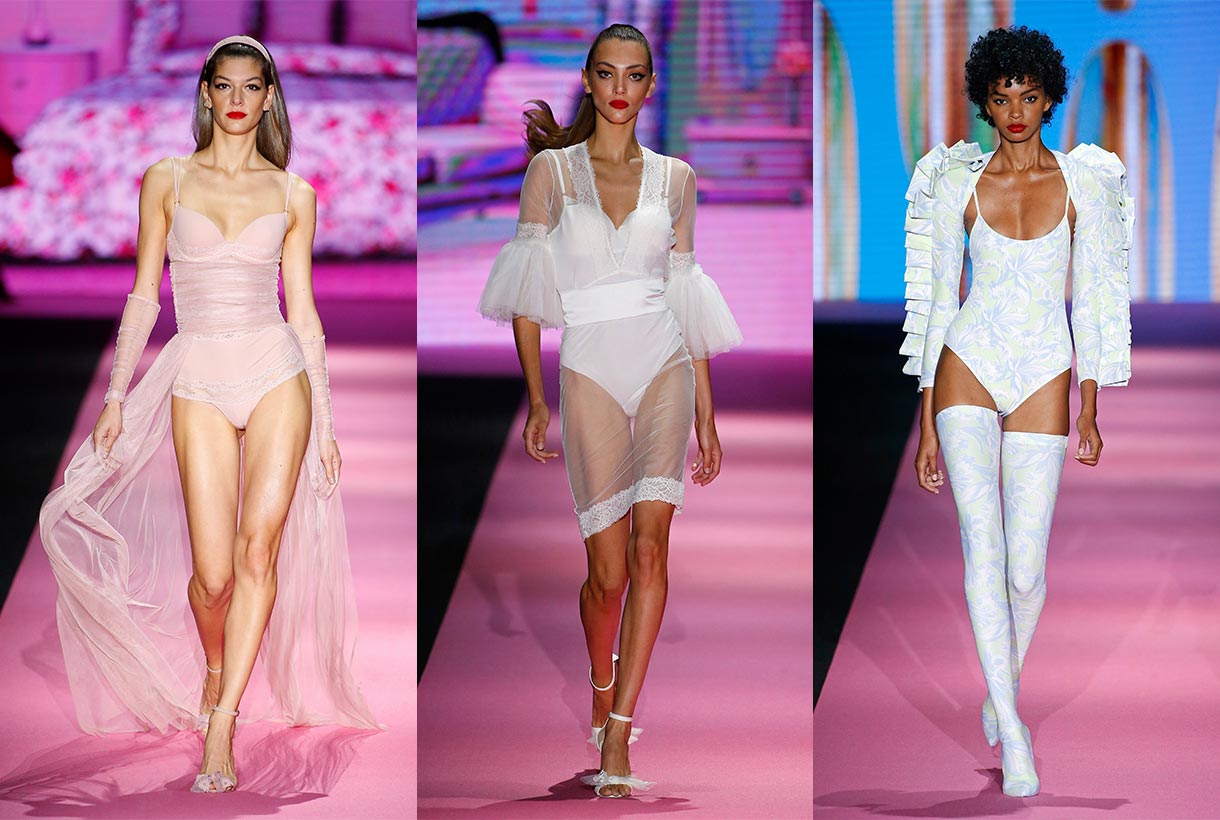
The Madrid catwalk will also pay tribute to Andrés Sardá , founder of the international lingerie firm, who died last September. The collection that will be presented is a tribute to his life, a review of the evolution of the company that forever changed intimate and bathroom fashion in Spain. The family firm took its first steps making shawls like the one Jackie Kennedy wore on her visit to Spain. Then they made the leap into lingerie and, in the 70s, to bathroom-wear. Women like Lady Gaga, Julianne Moore or Shakira have worn their creations. Luxury and comfort are the two key features of the company, headed today by Núria Sardá.
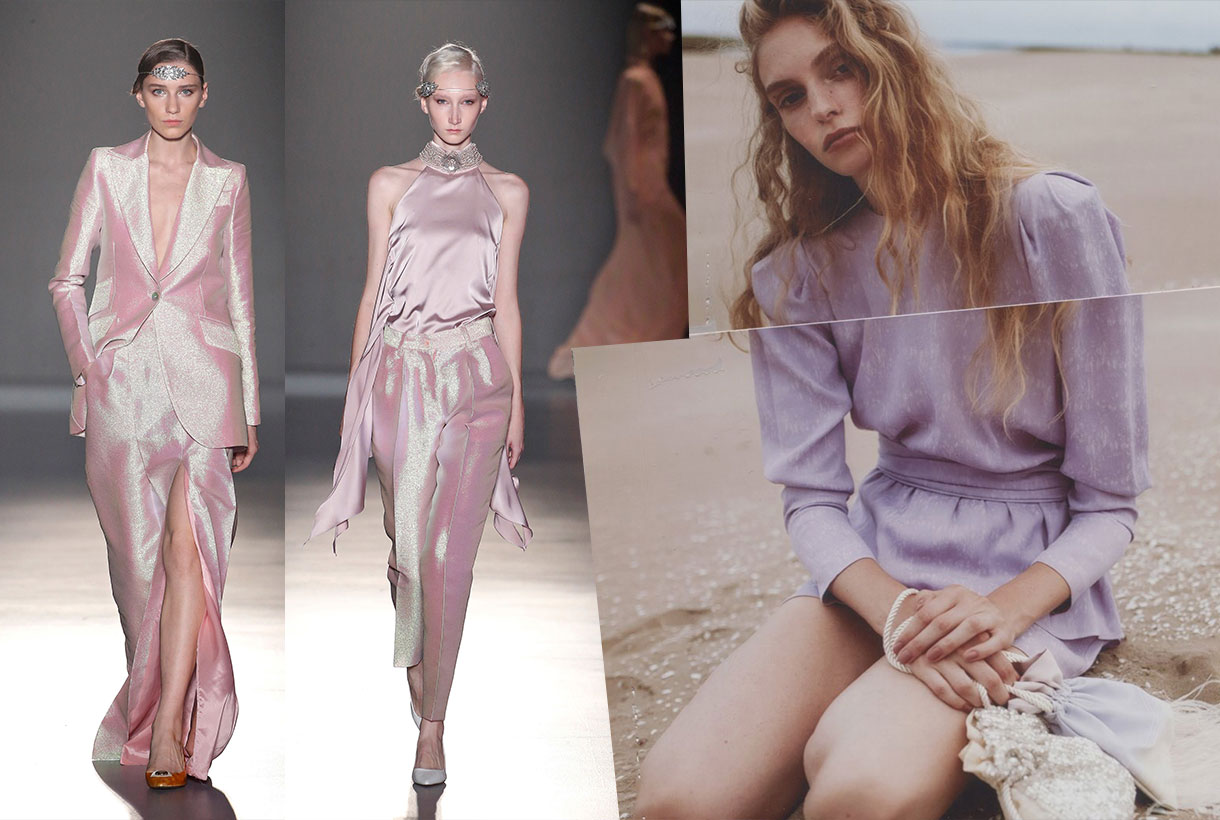
080 Barcelona Fashion
In Barcelona 080 Barcelona Fashion returns to its usual setting: the Sant Pau Modernist Venue that will incorporate new presentation formats in this edition, which seeks to be more international. Thus the latestt edition, that will take place from February 3-6, will feature prominent companies such as South Africa’s CHULAAP, the Asian-born Peruvian designer Esau Yori, the New York company Love Binetti, the designers Yiorgos Eleftheriades and Boris Bidjan, who will return to the parade in Barcelona after eleven seasons presenting his collections in Paris.
At Gratacós we will follow closely the new Menchen Tomàs collection inspired by the Manhattan of the 70s and the debut of Avellaneda with his range of feminine tailoring, and Eikò Ai , the company of the Barcelona designer Glòria Lladó. This brand will present Quantum One, a collection that takes as its reference quantum energy and the unity of the cosmos in its hand-made and locally produced design creations. We will see what they surprise us with!

















































 We often focus on fashion shows as a centre of analysis of the latest trends in colour and trend-setting fabrics, although we do not deny that it is on the red carpet of major events related to cinema, fashion or music where these trends crystallize, through impact looks that also influence what will be worn during one season or another. These costumes or dresses worn by the artists of the moment are not chosen at random – or not at all – but are also part of the machinery of the industry itself in order to define the main features of the season. Designers choose, celebrities wear thelook and consumers buy. Everyone plays a role in this ephemeral sector.
We often focus on fashion shows as a centre of analysis of the latest trends in colour and trend-setting fabrics, although we do not deny that it is on the red carpet of major events related to cinema, fashion or music where these trends crystallize, through impact looks that also influence what will be worn during one season or another. These costumes or dresses worn by the artists of the moment are not chosen at random – or not at all – but are also part of the machinery of the industry itself in order to define the main features of the season. Designers choose, celebrities wear thelook and consumers buy. Everyone plays a role in this ephemeral sector.














